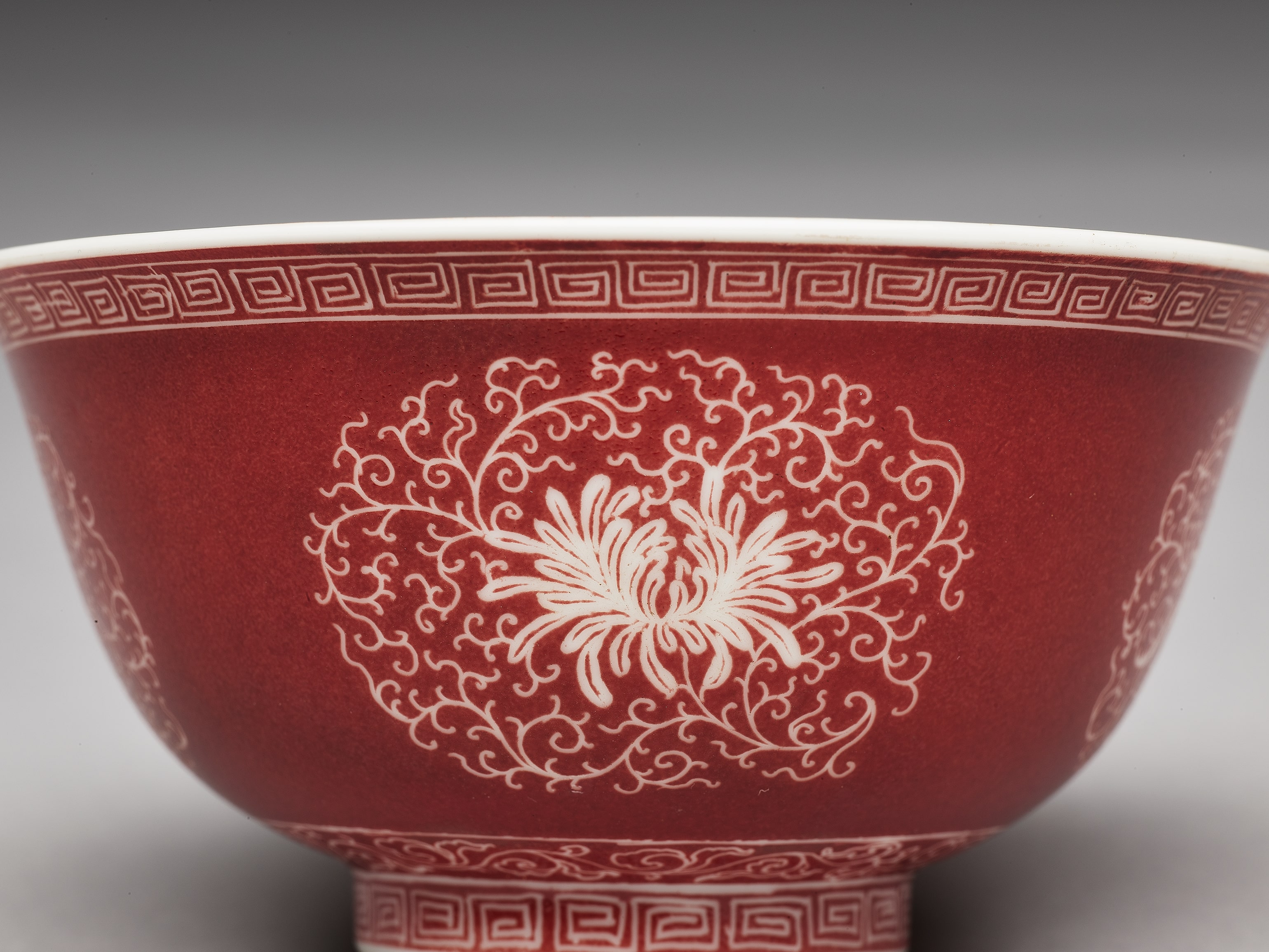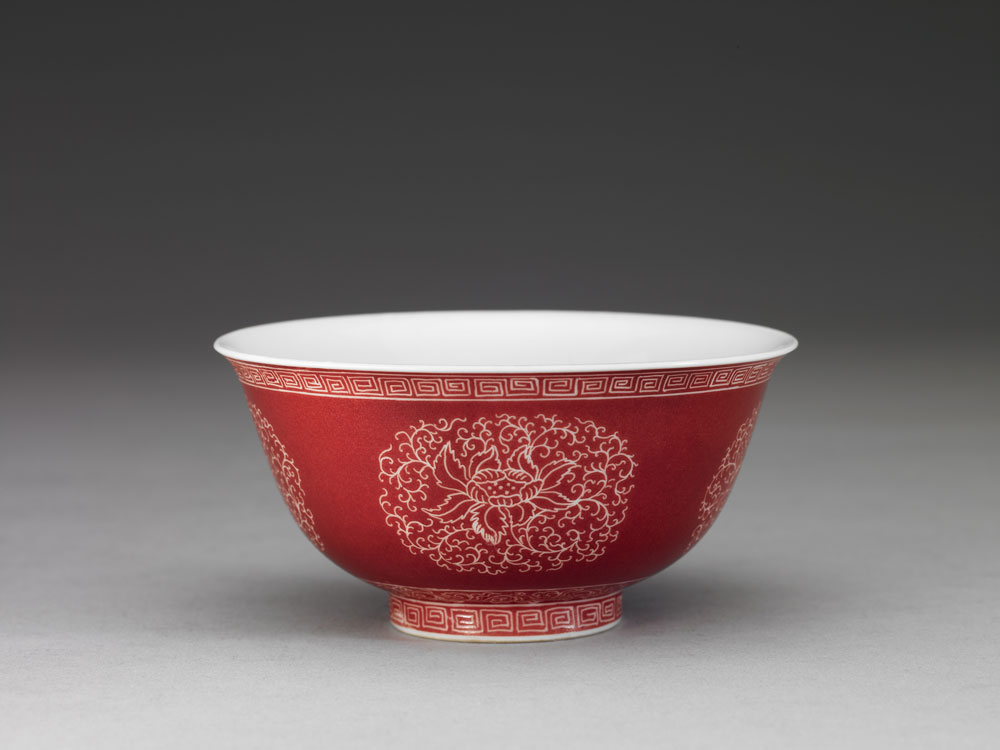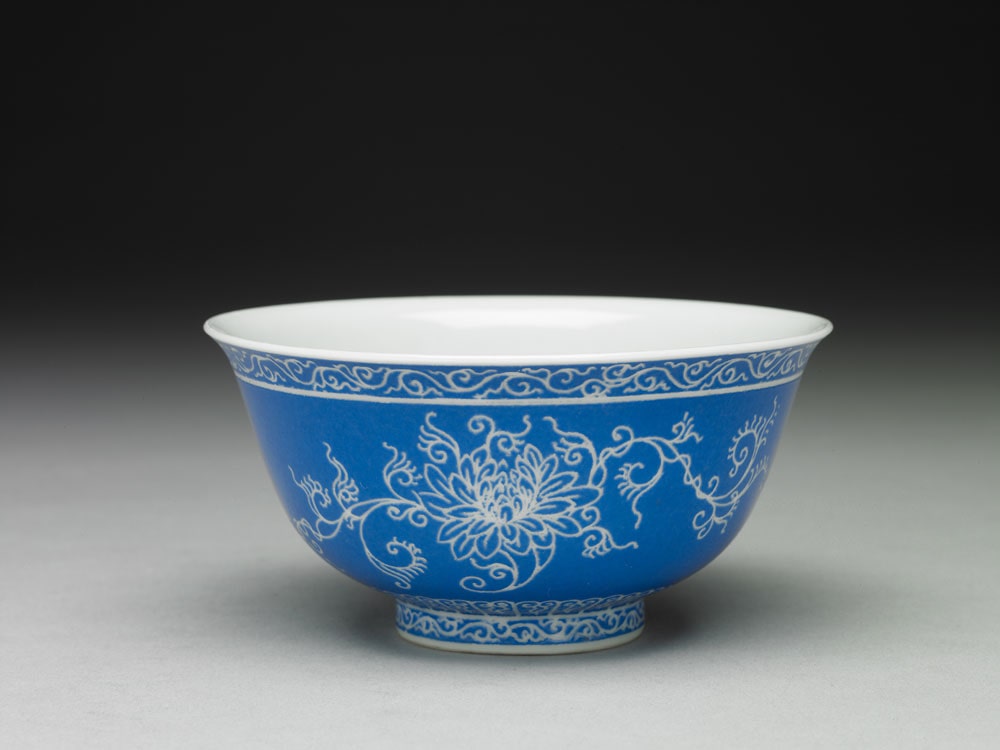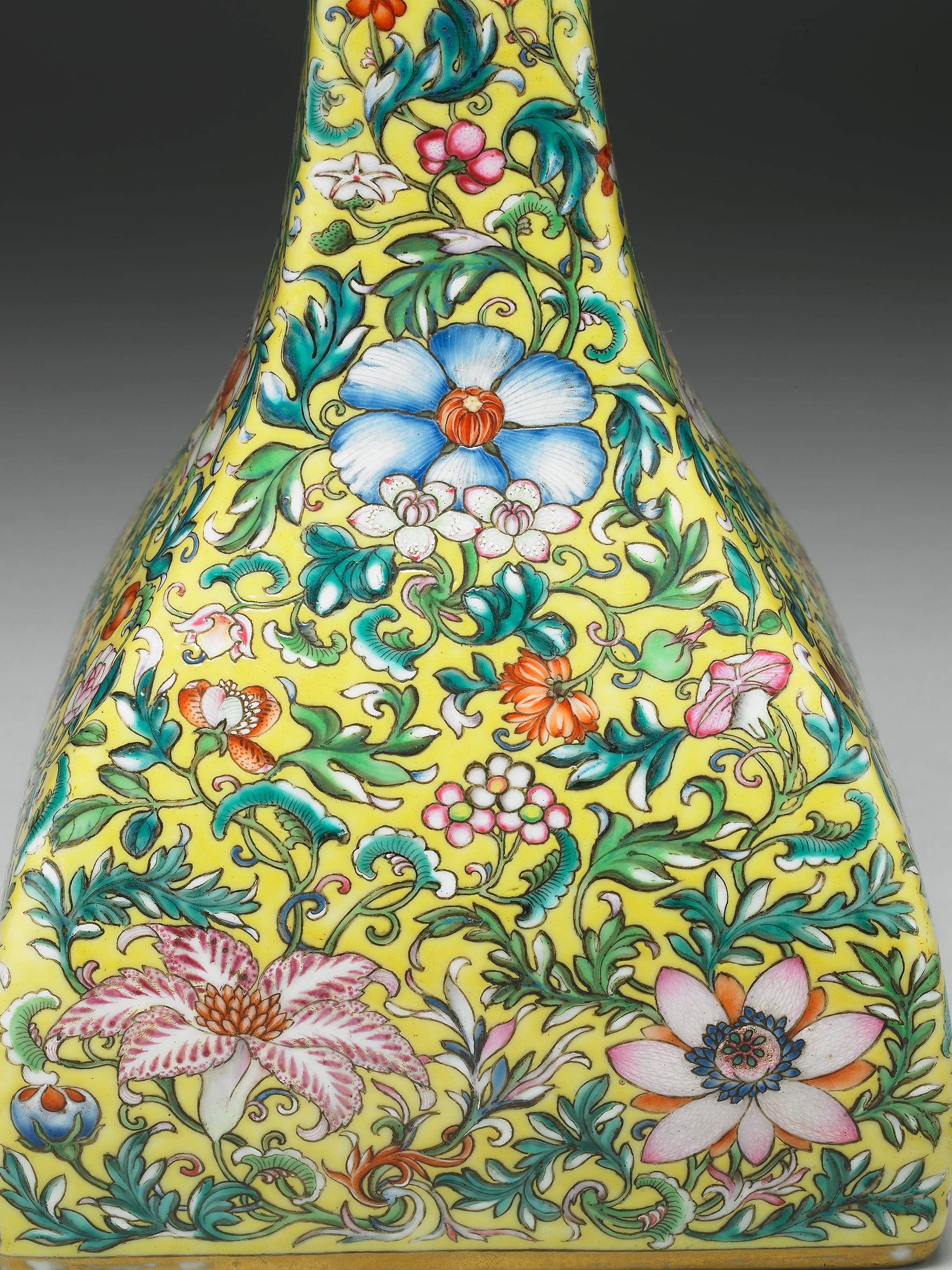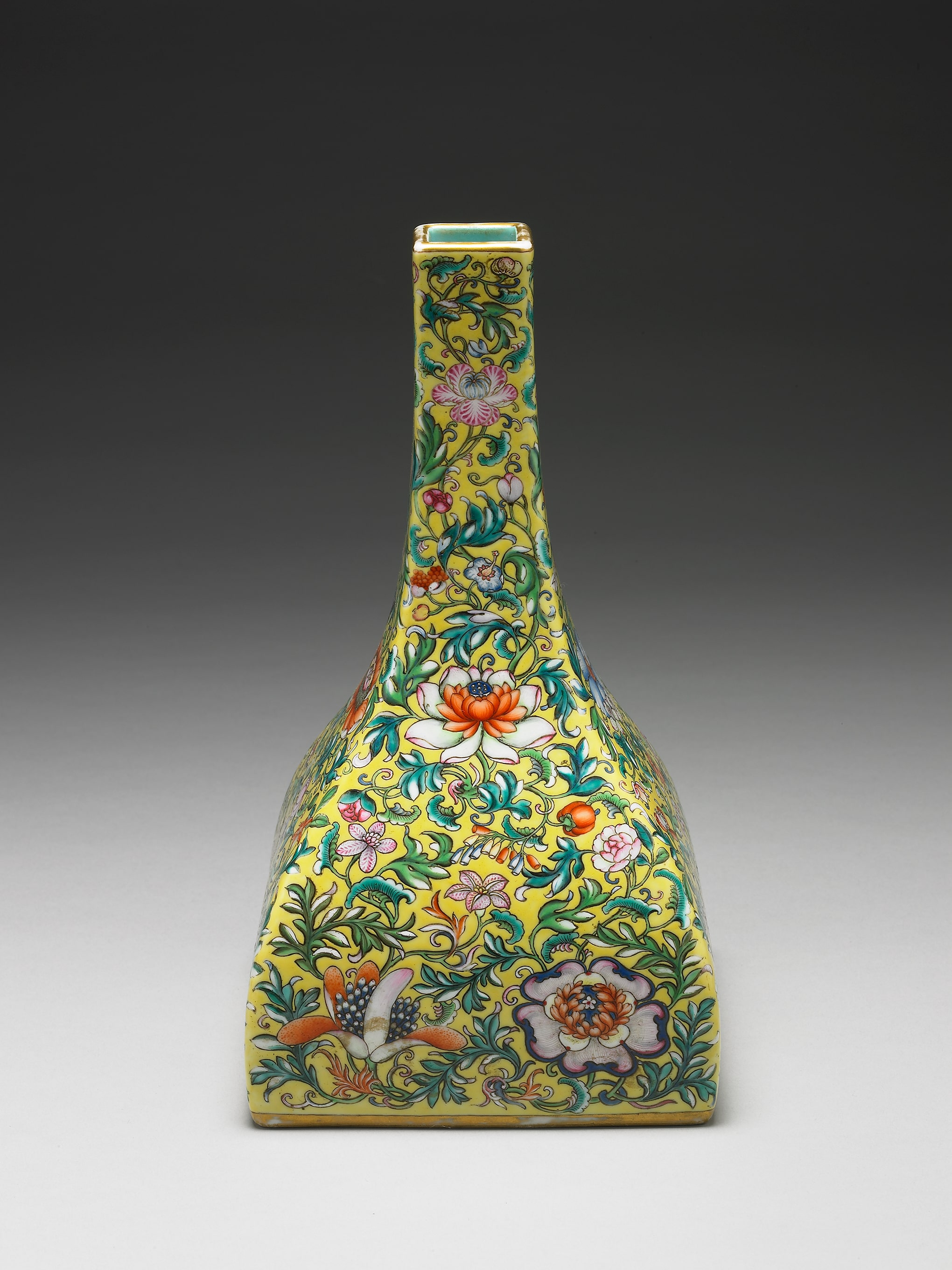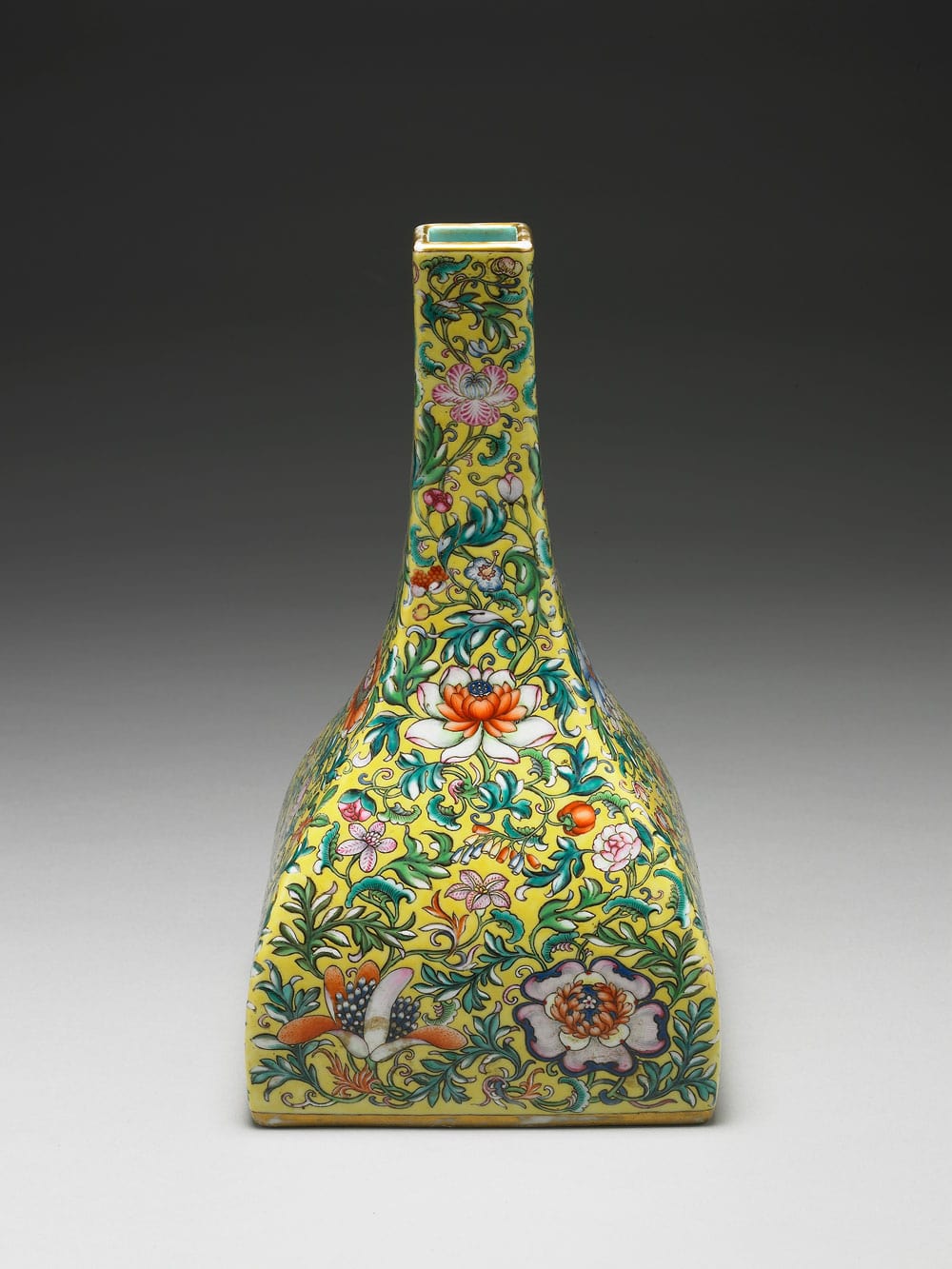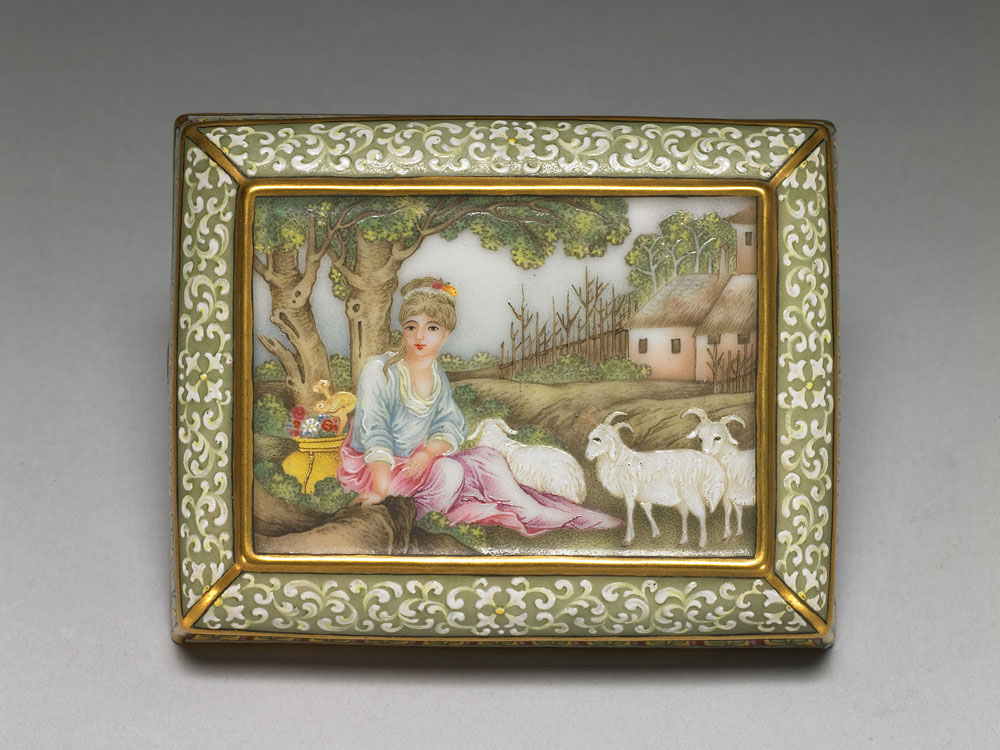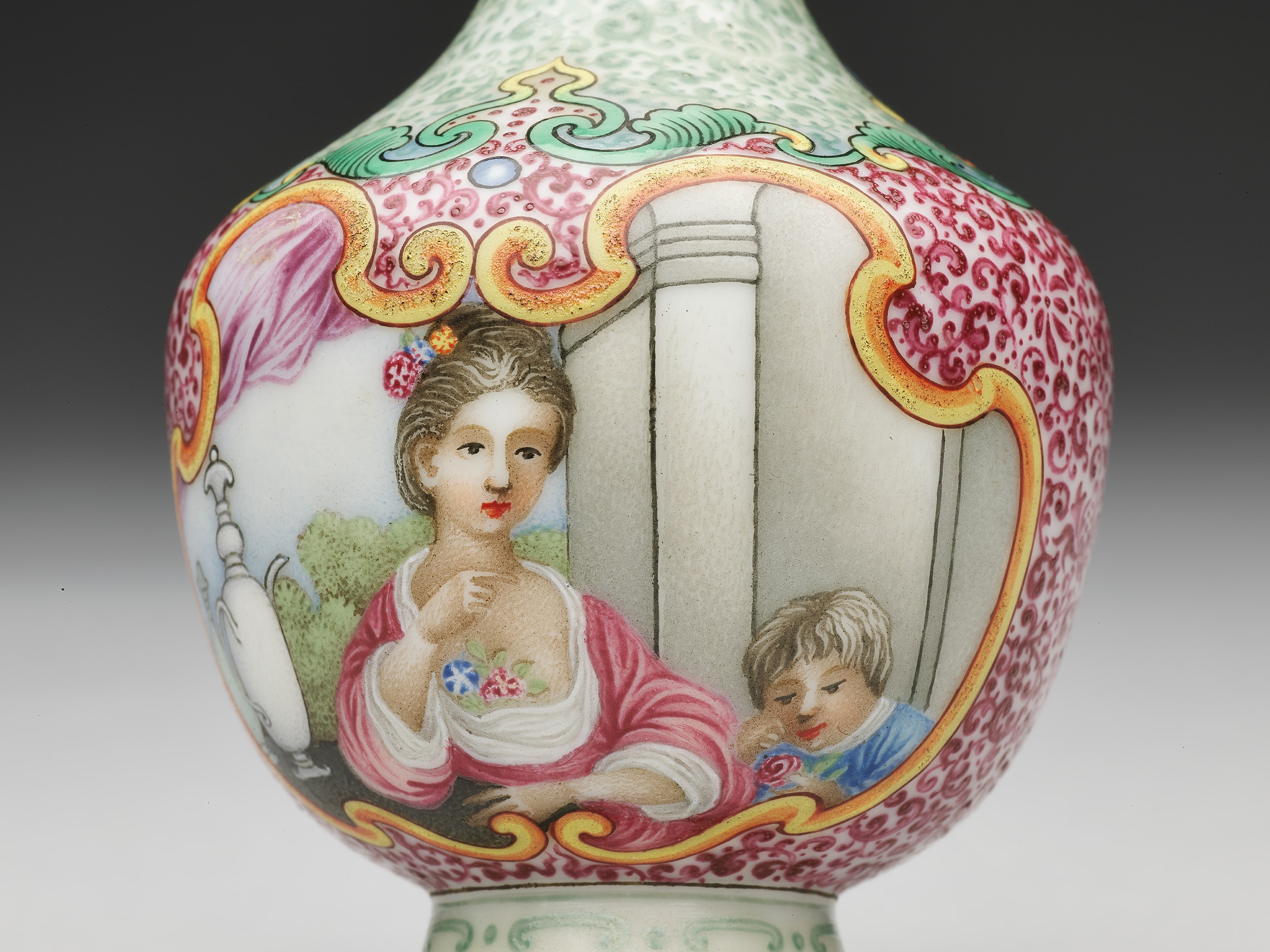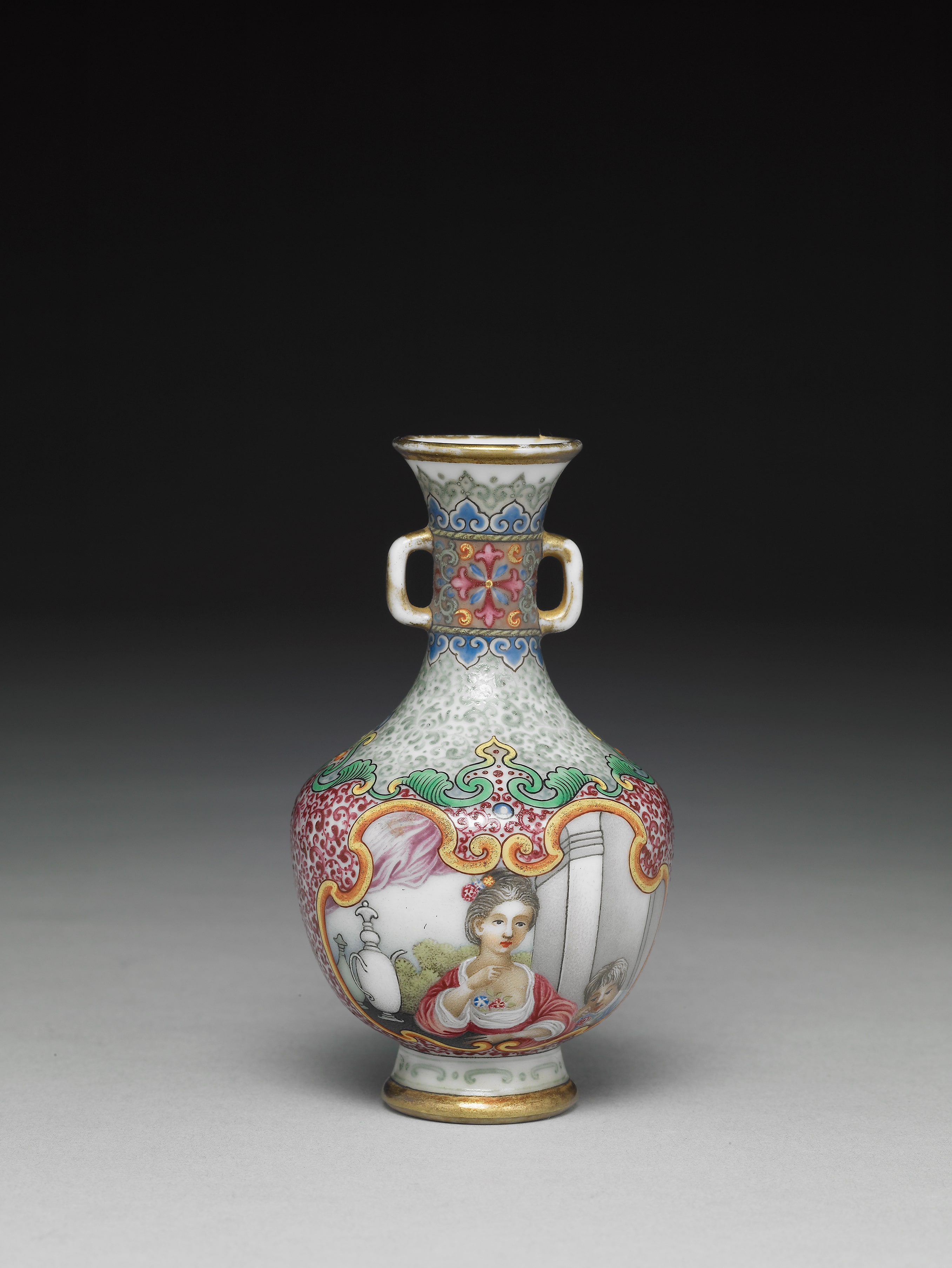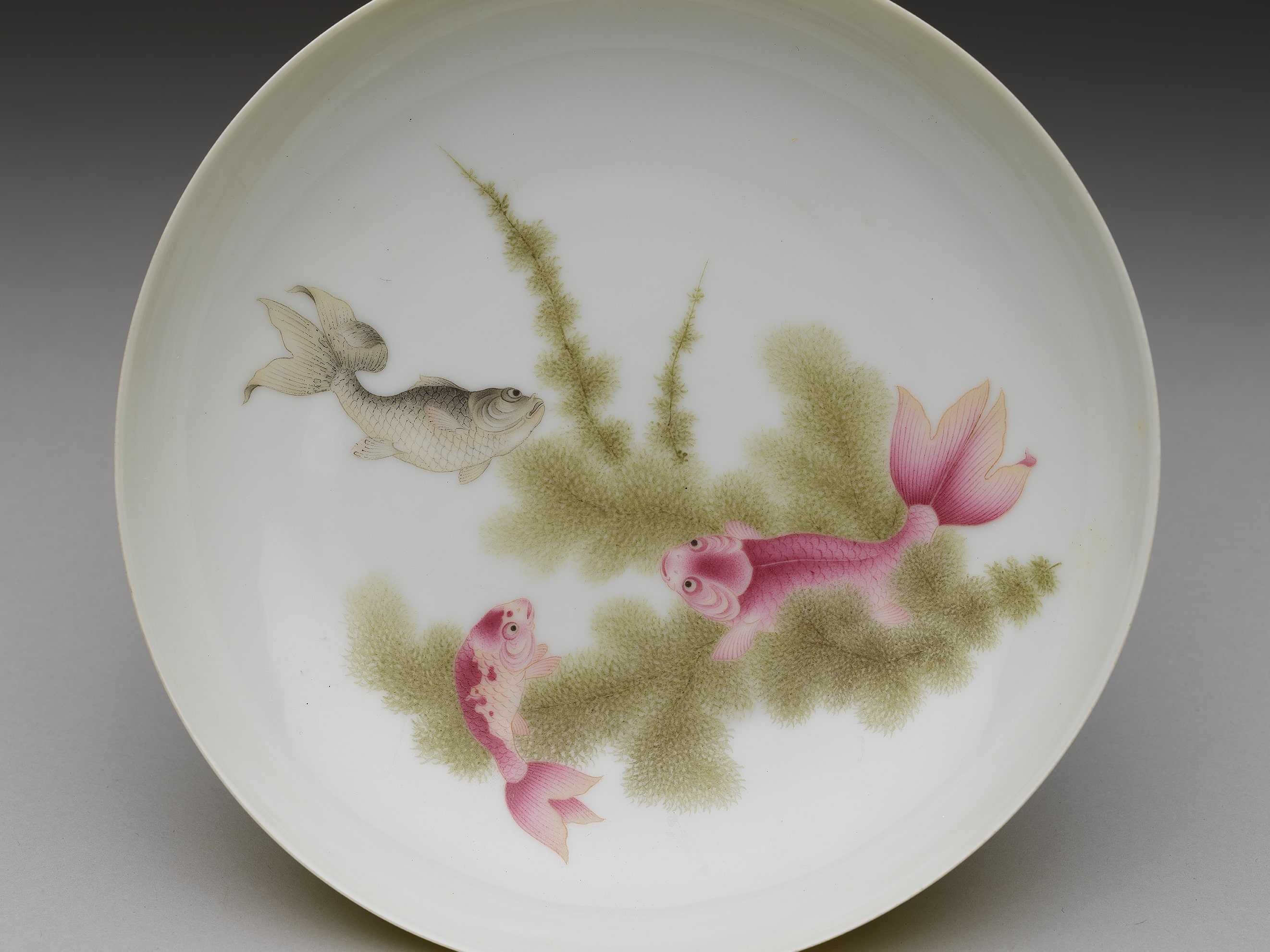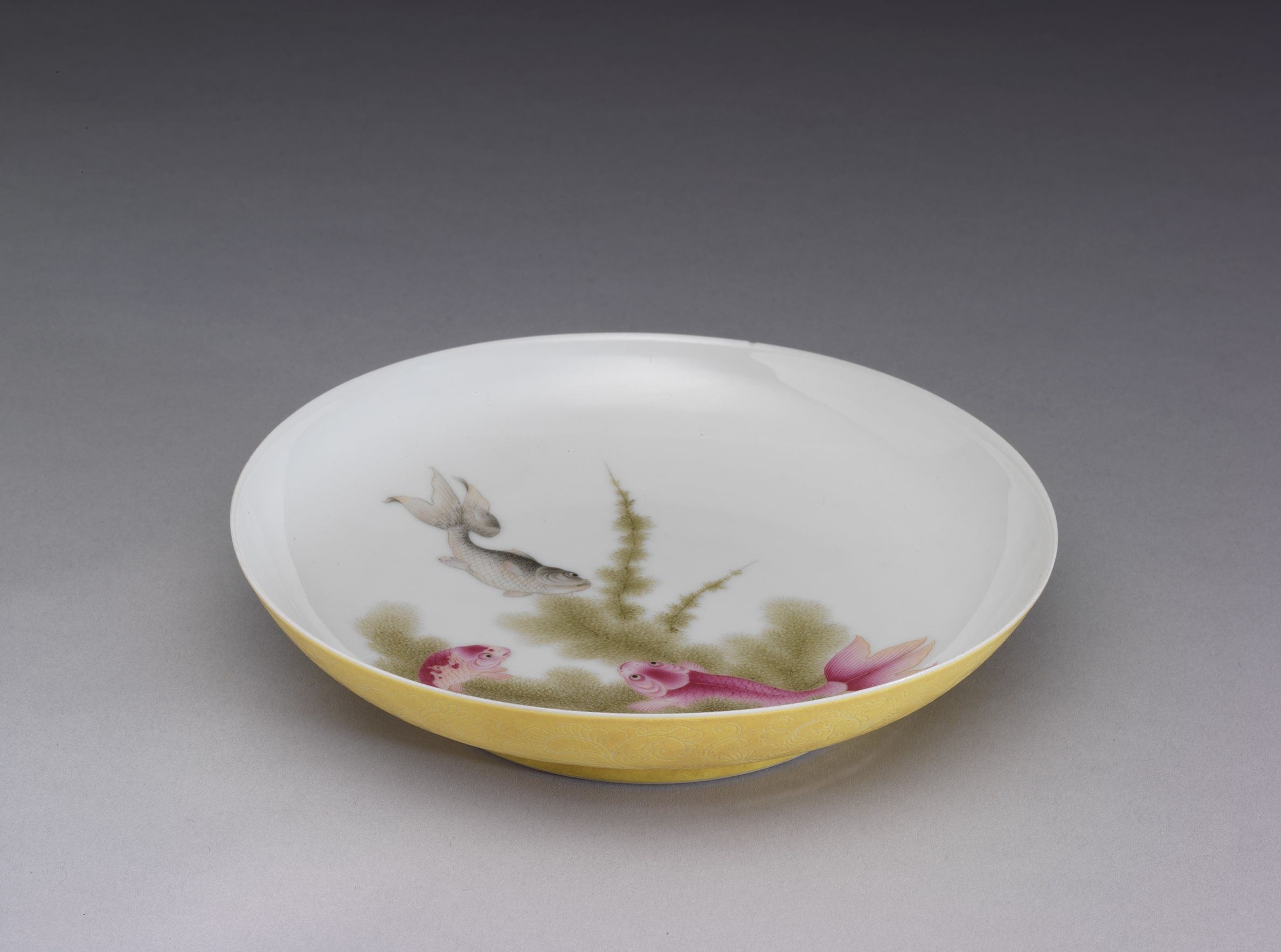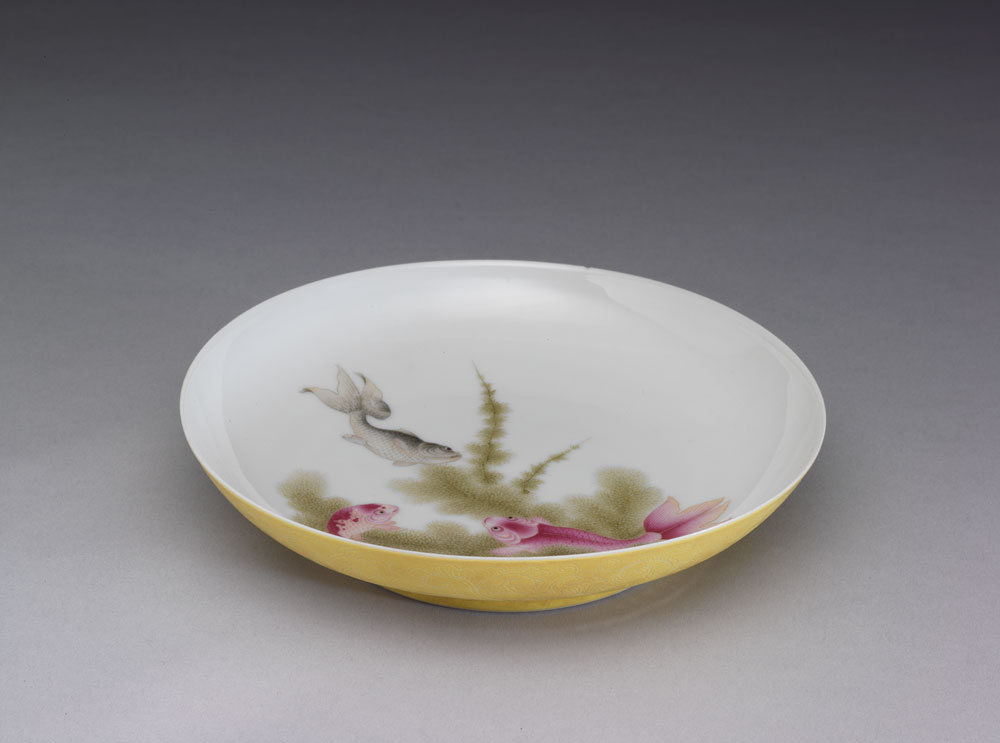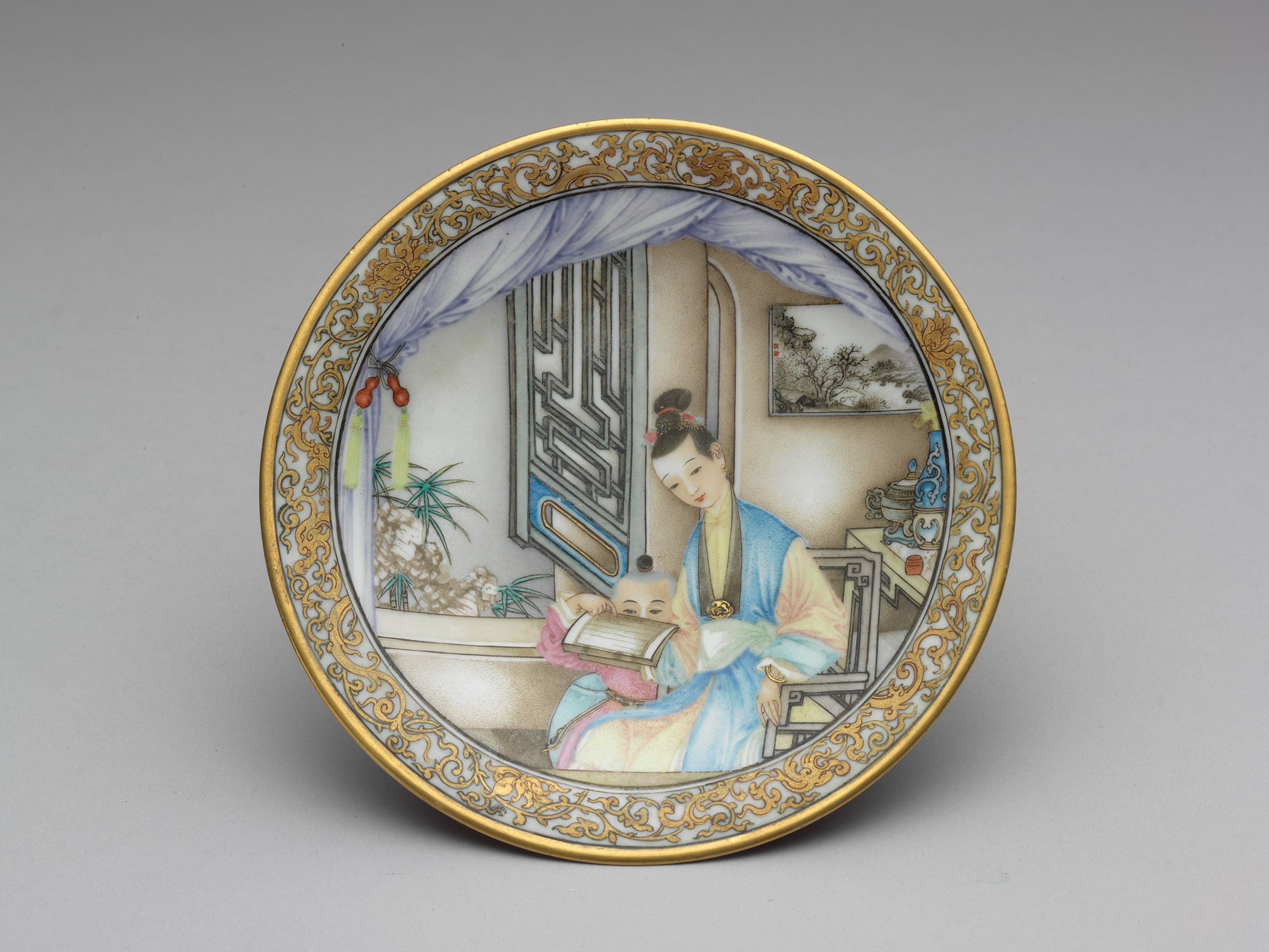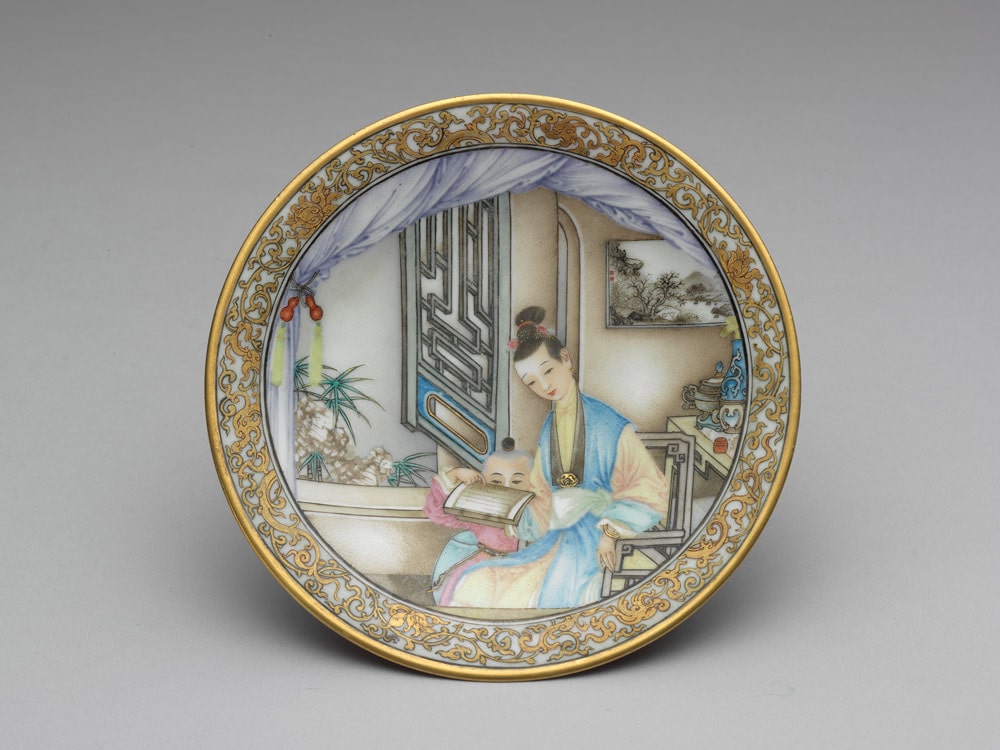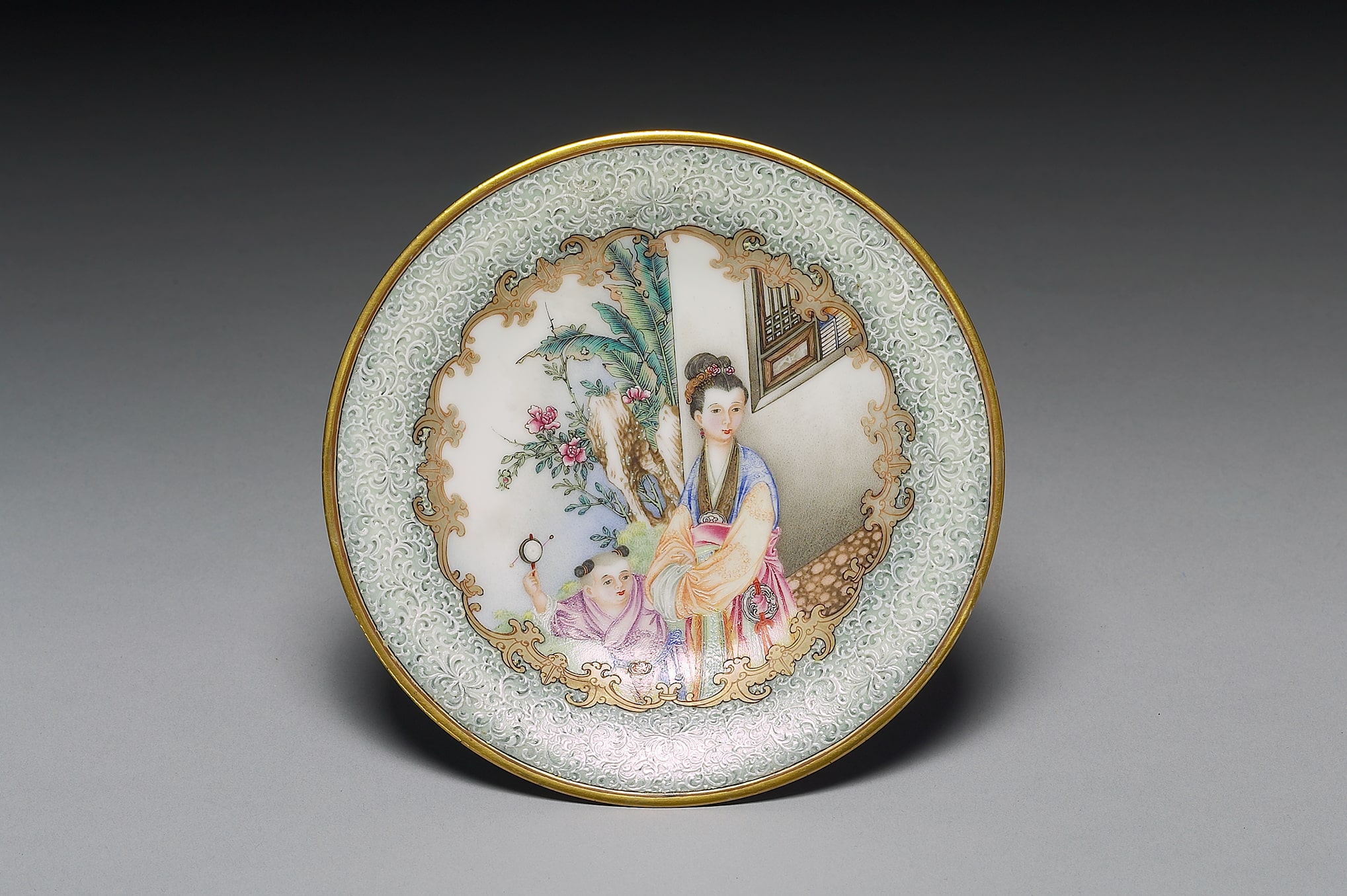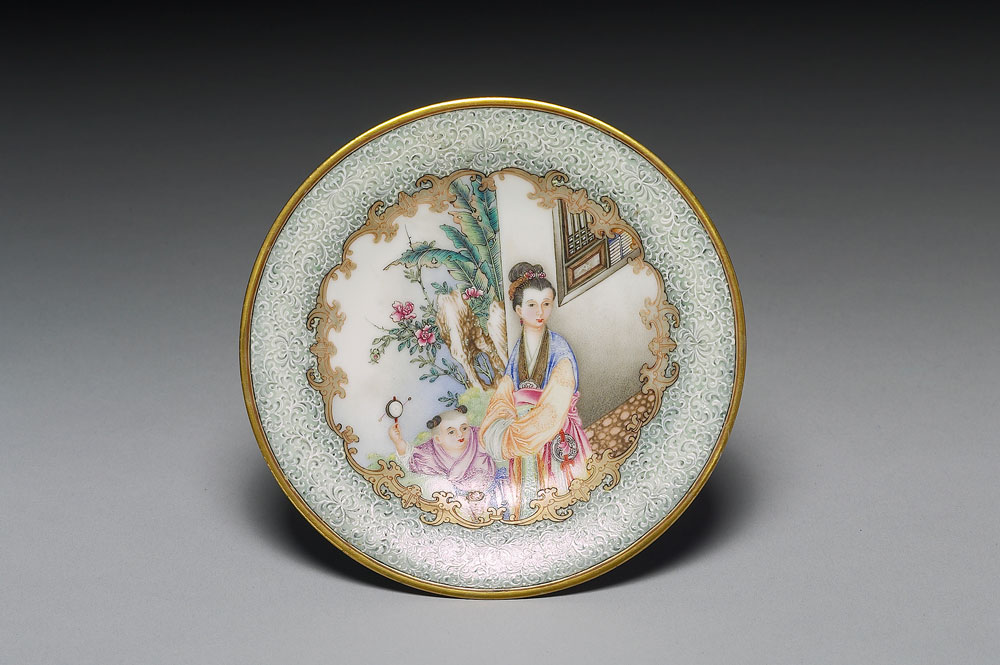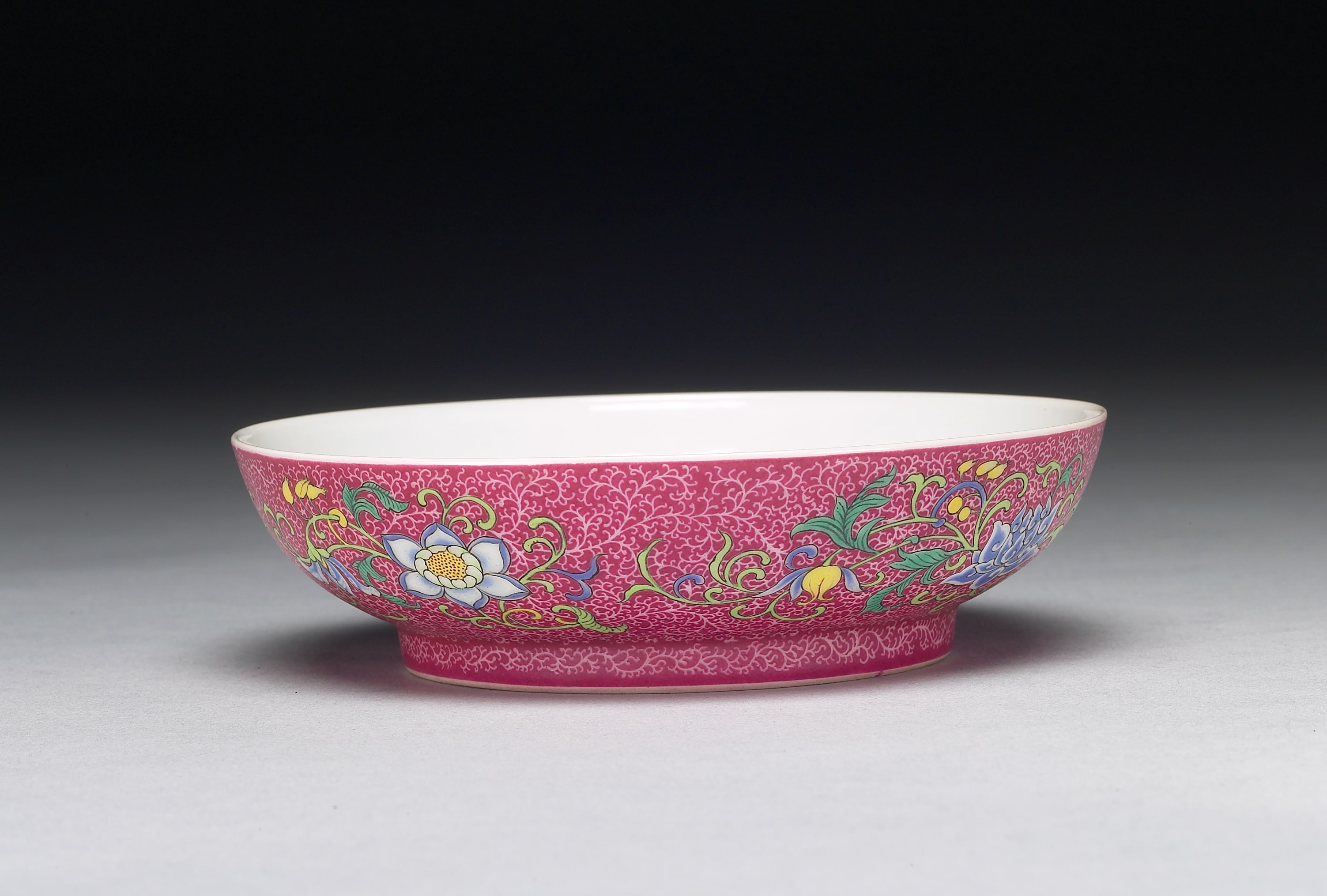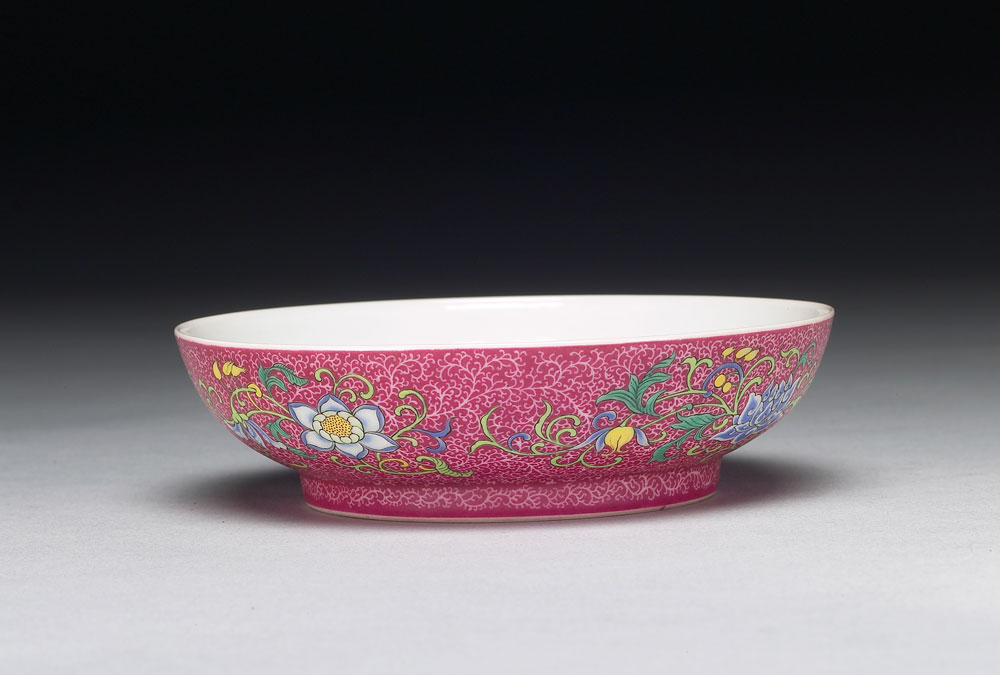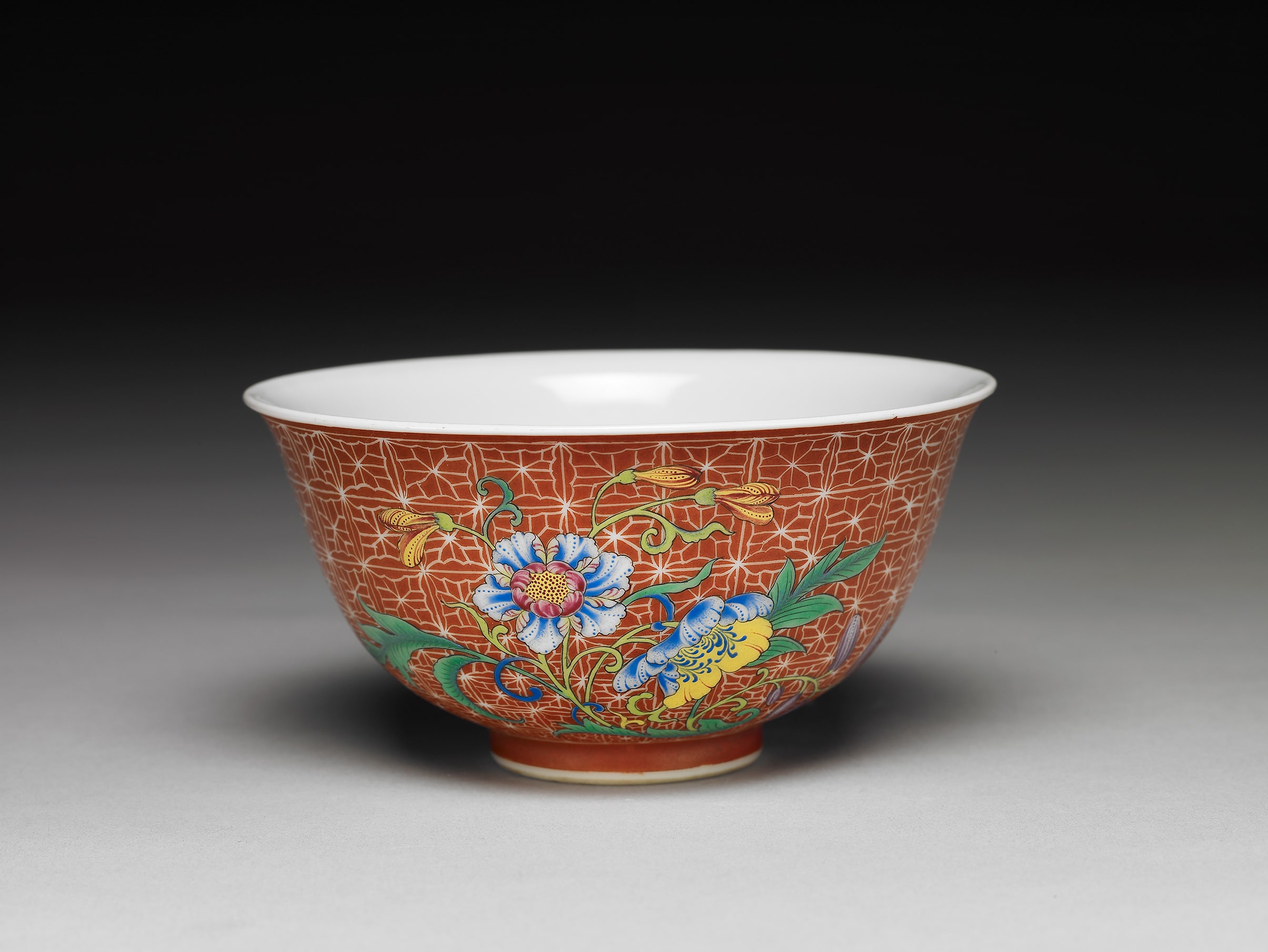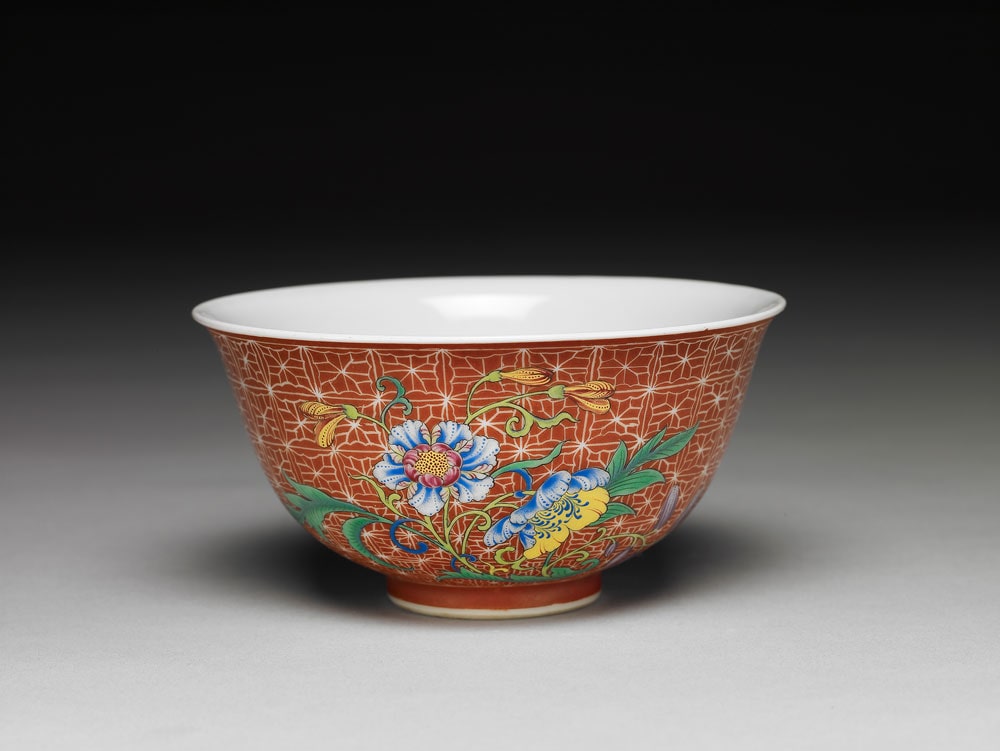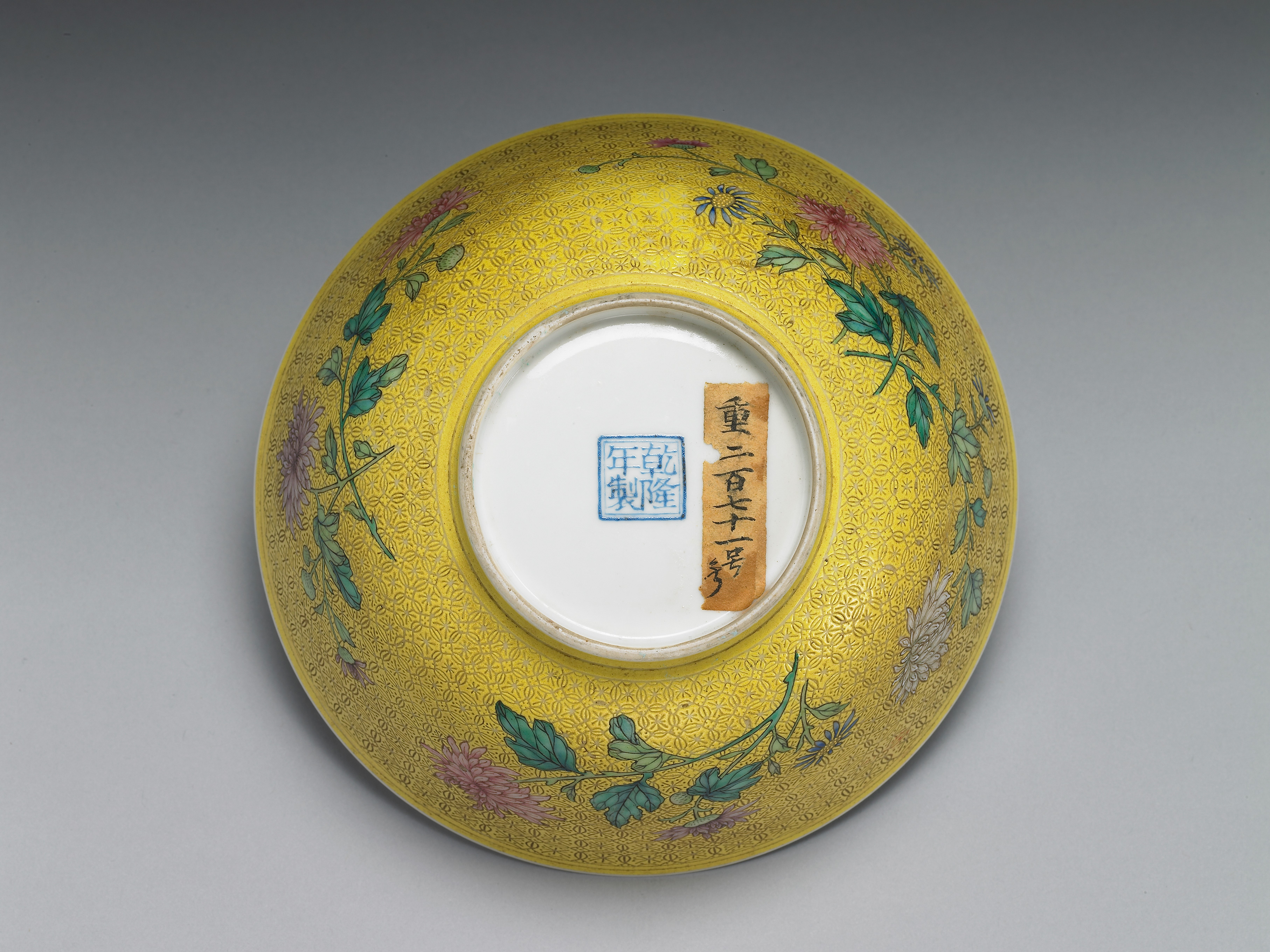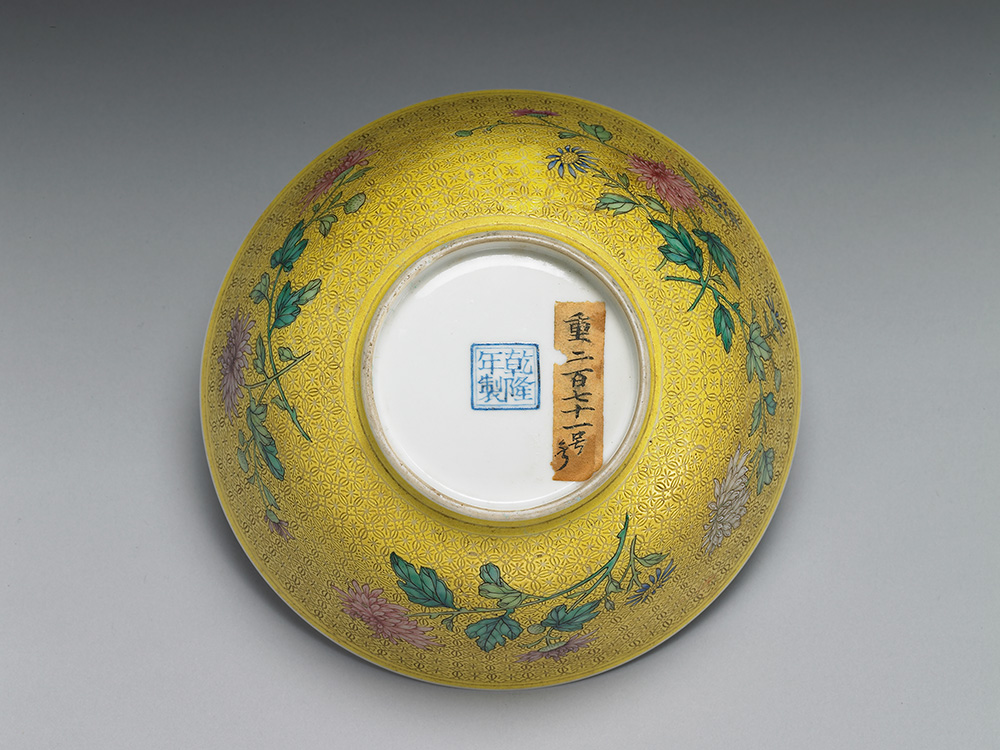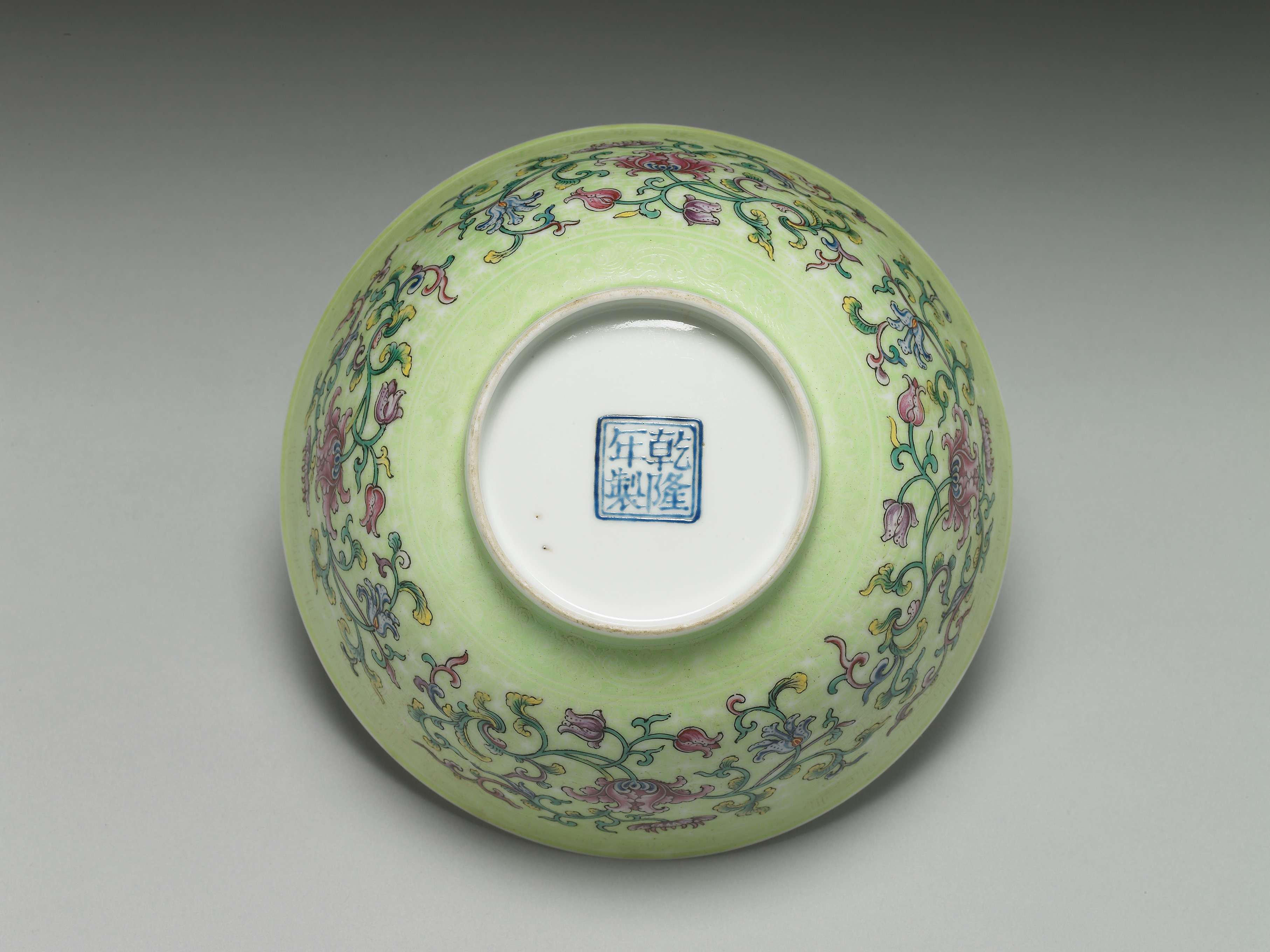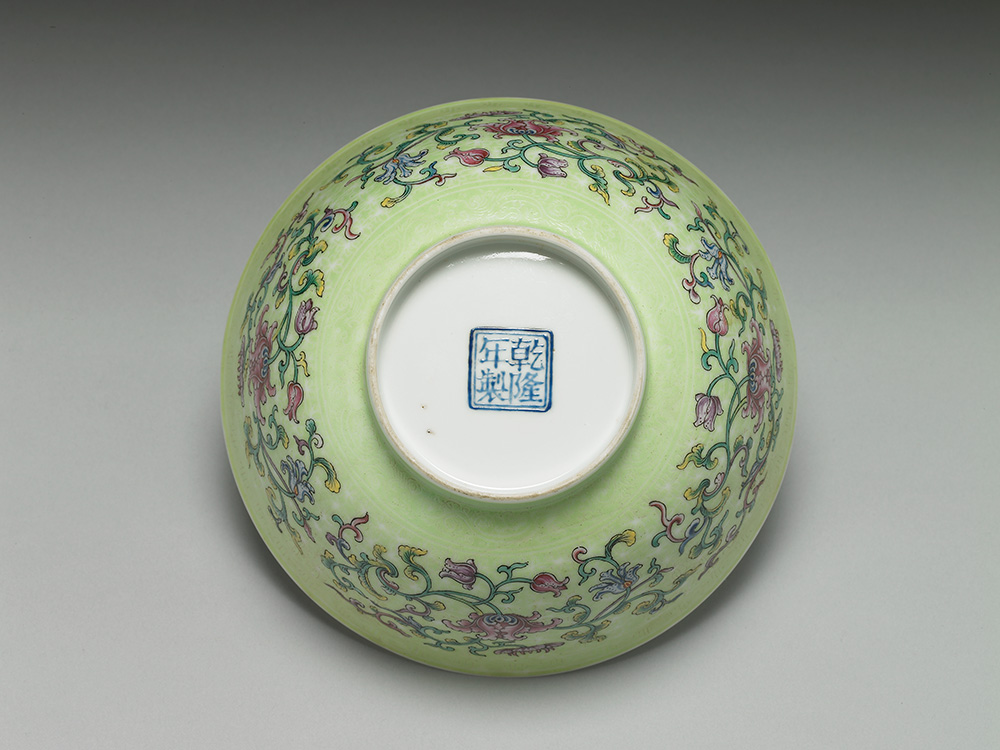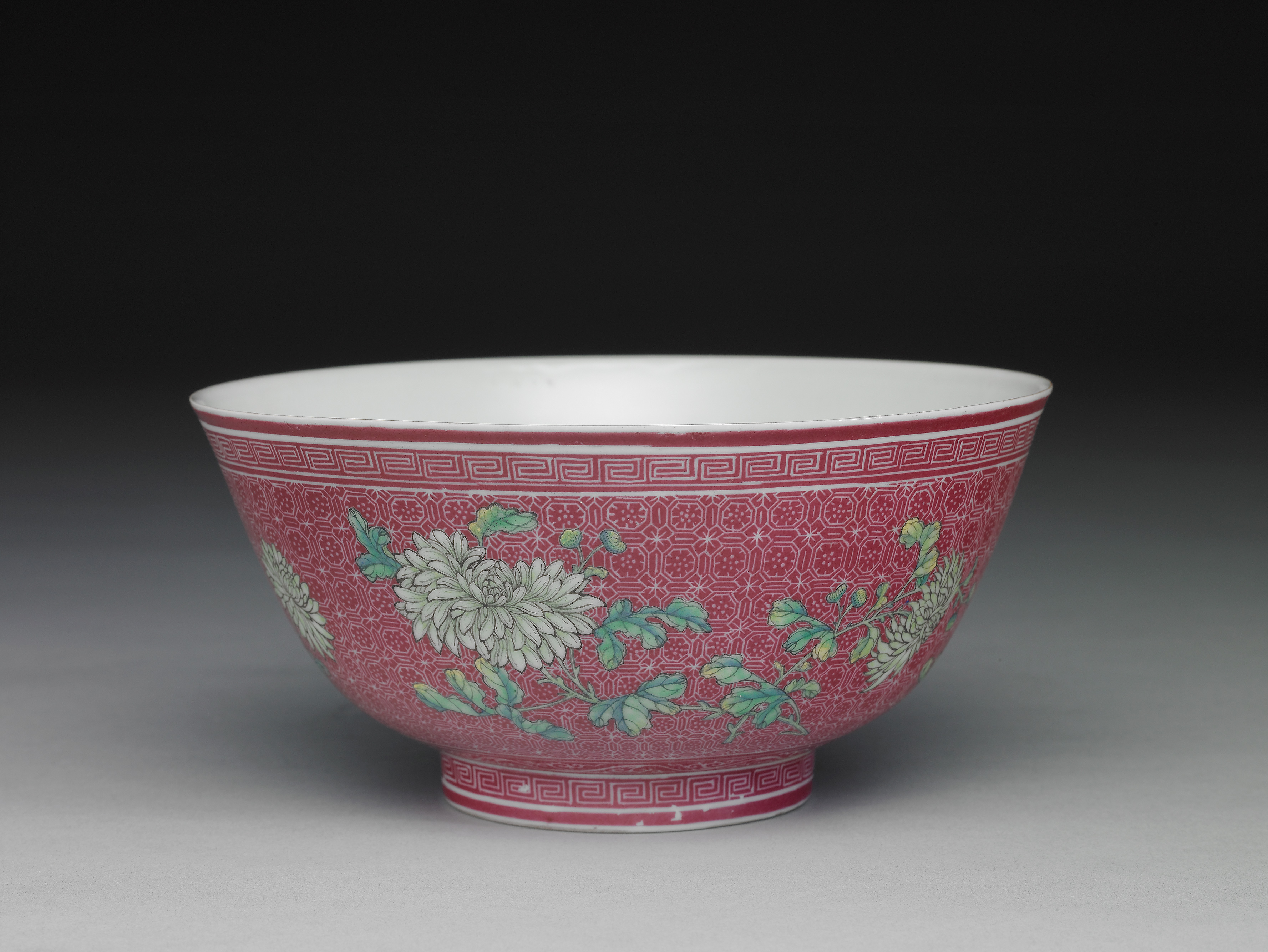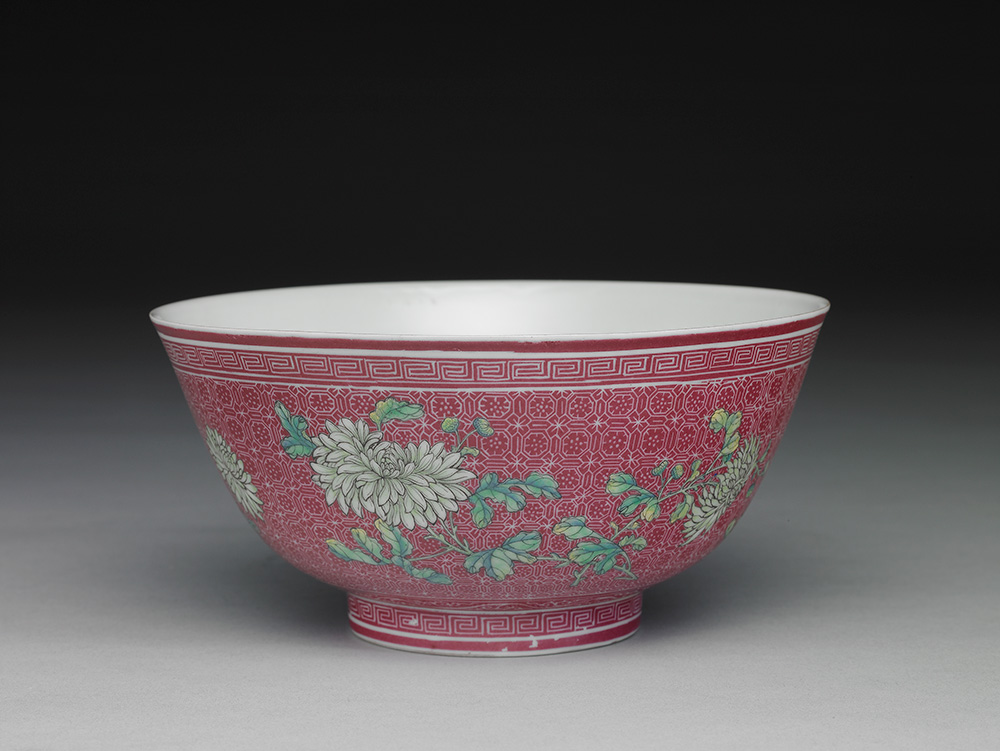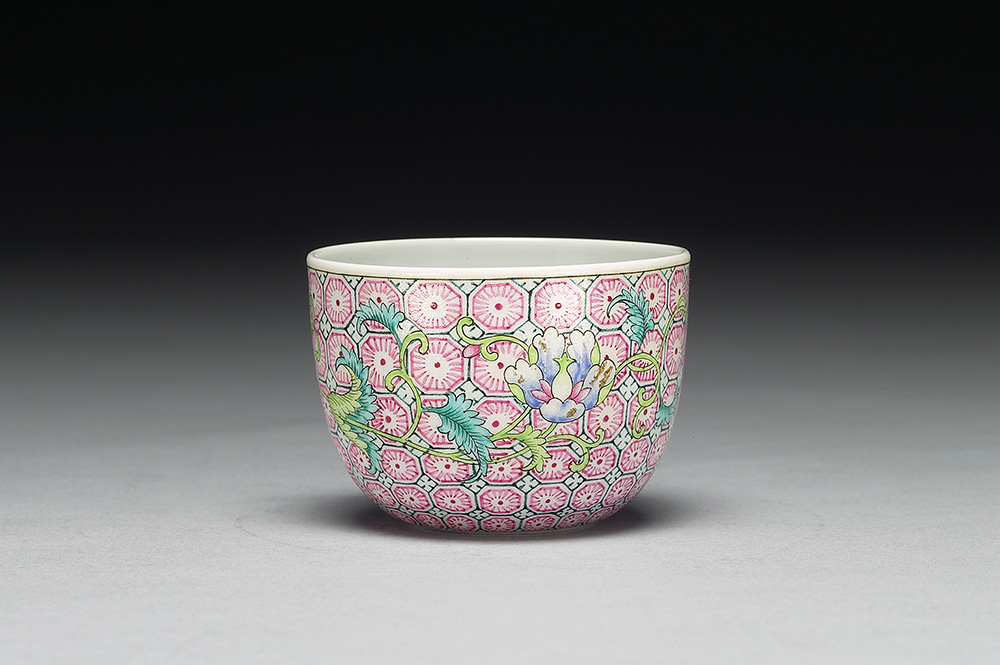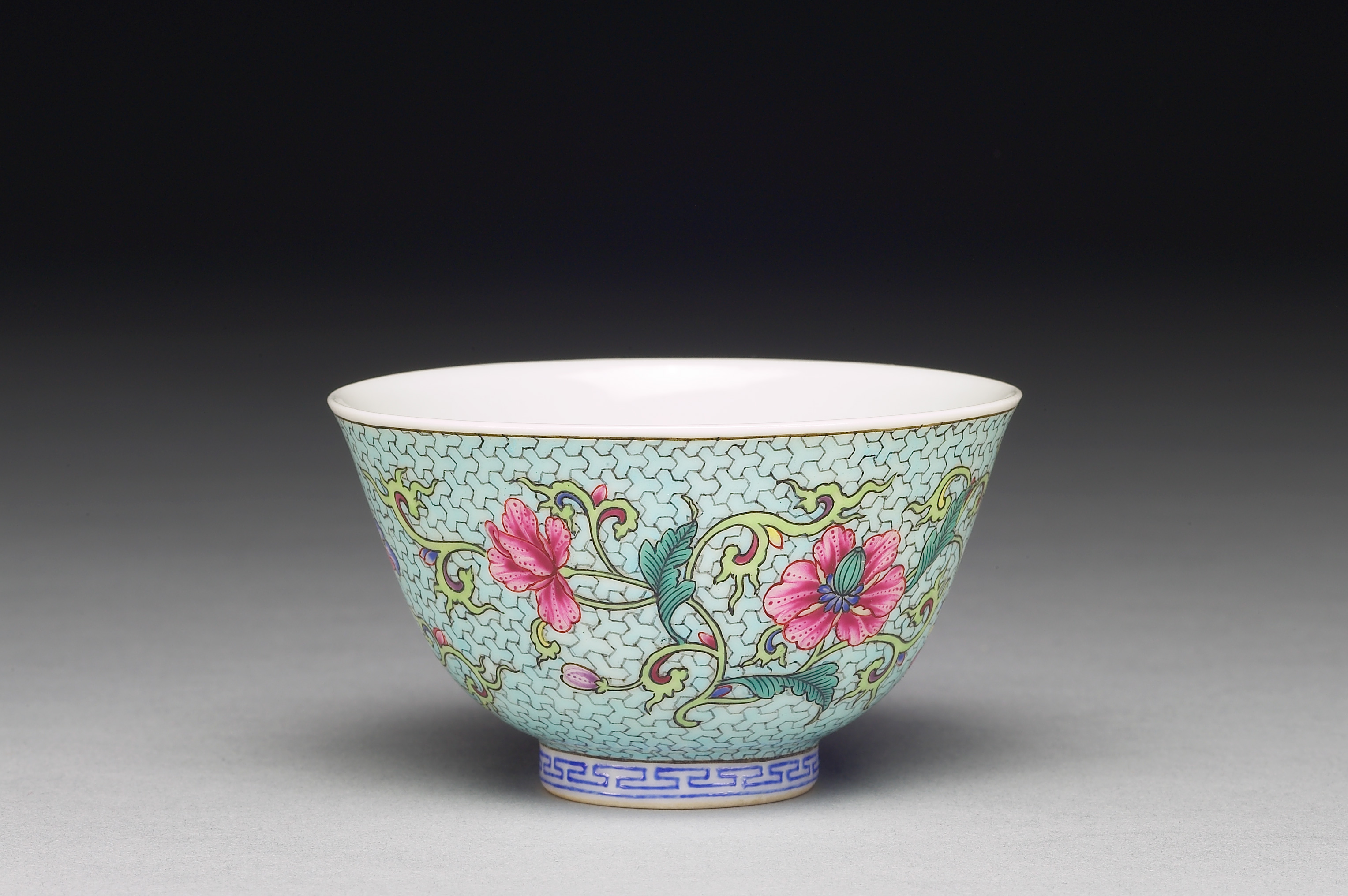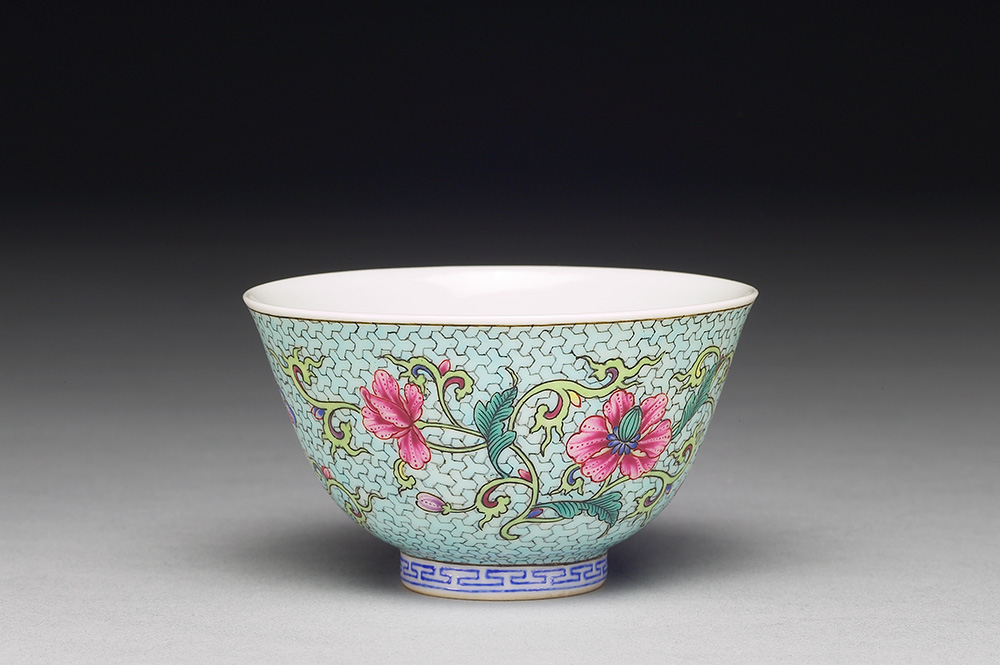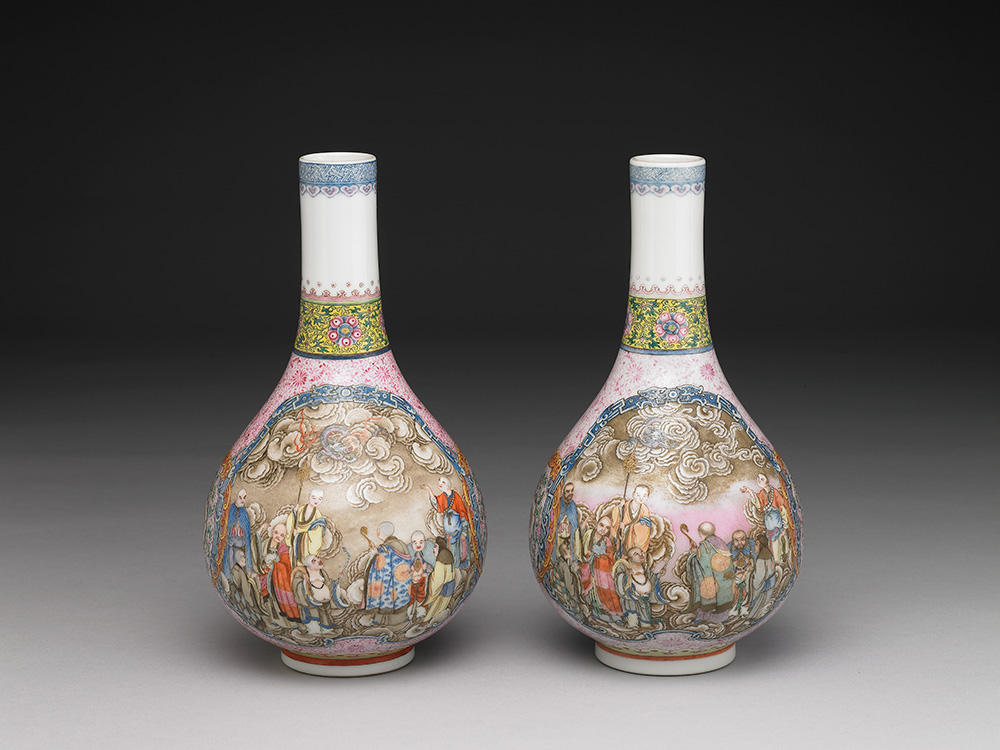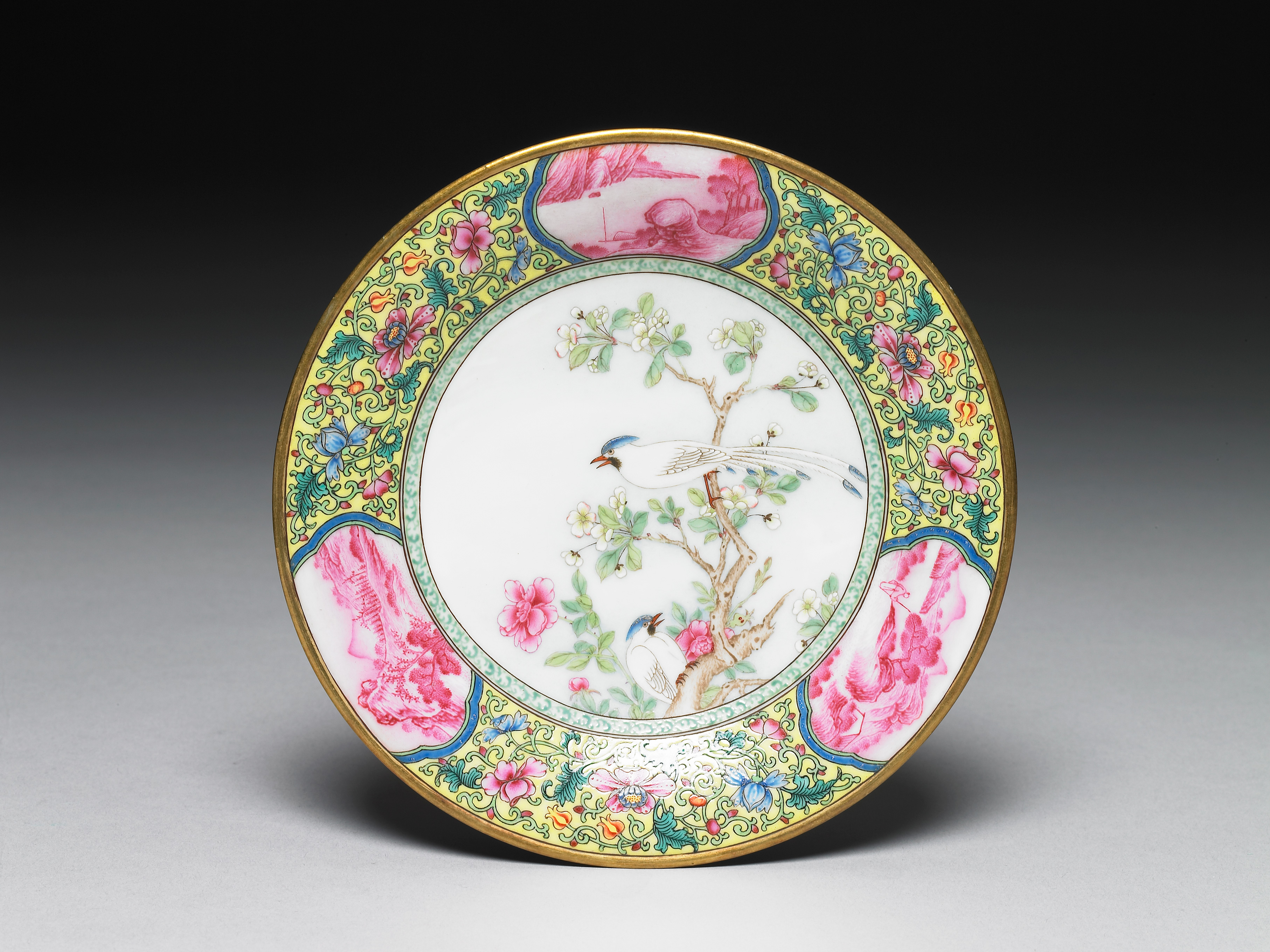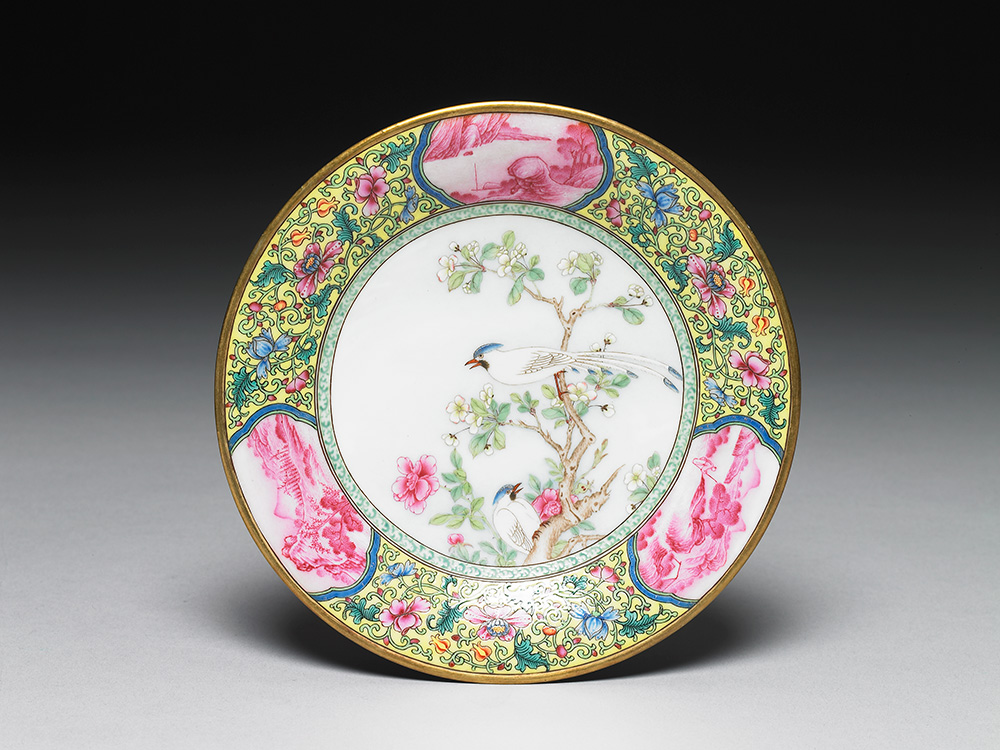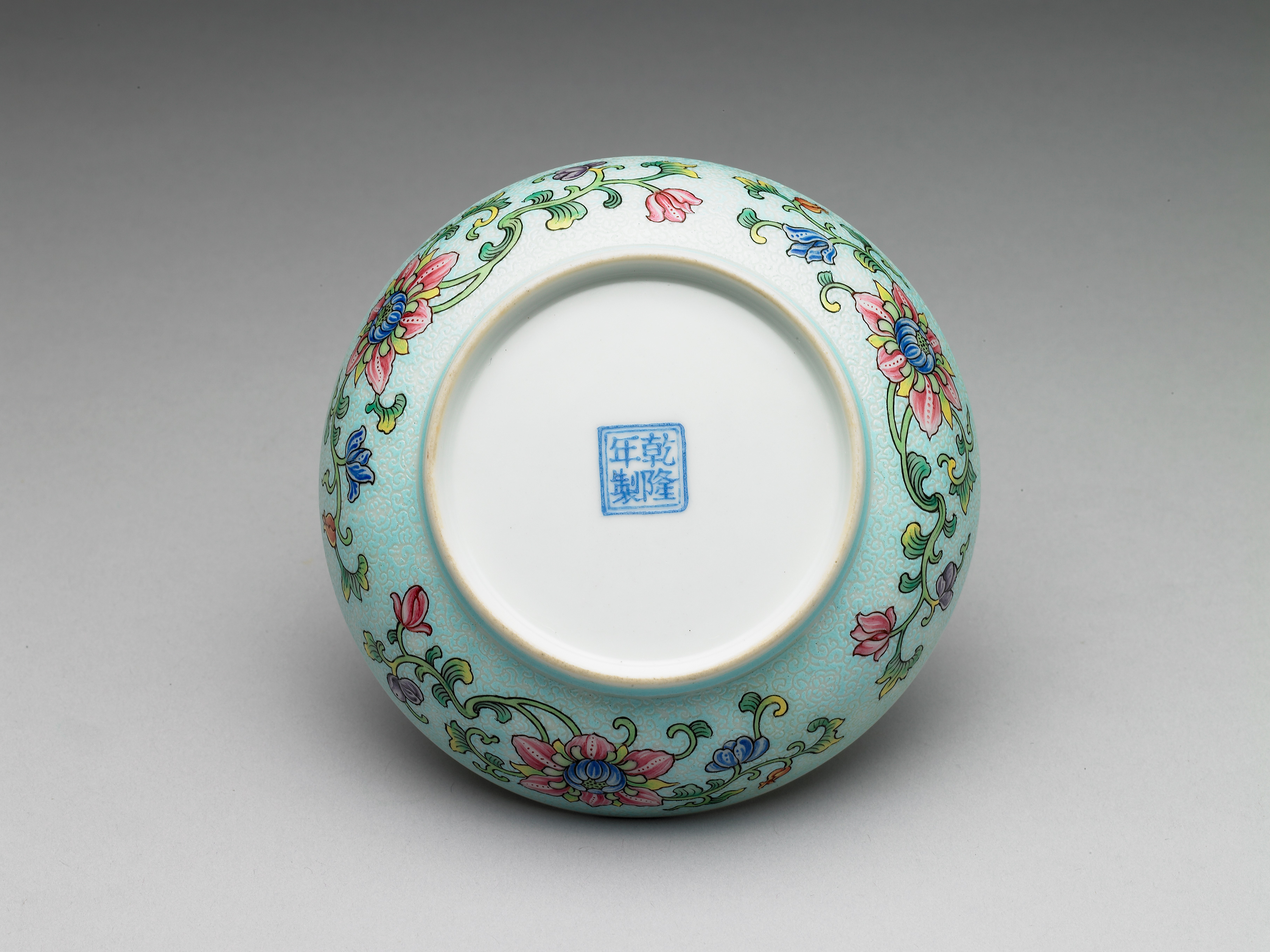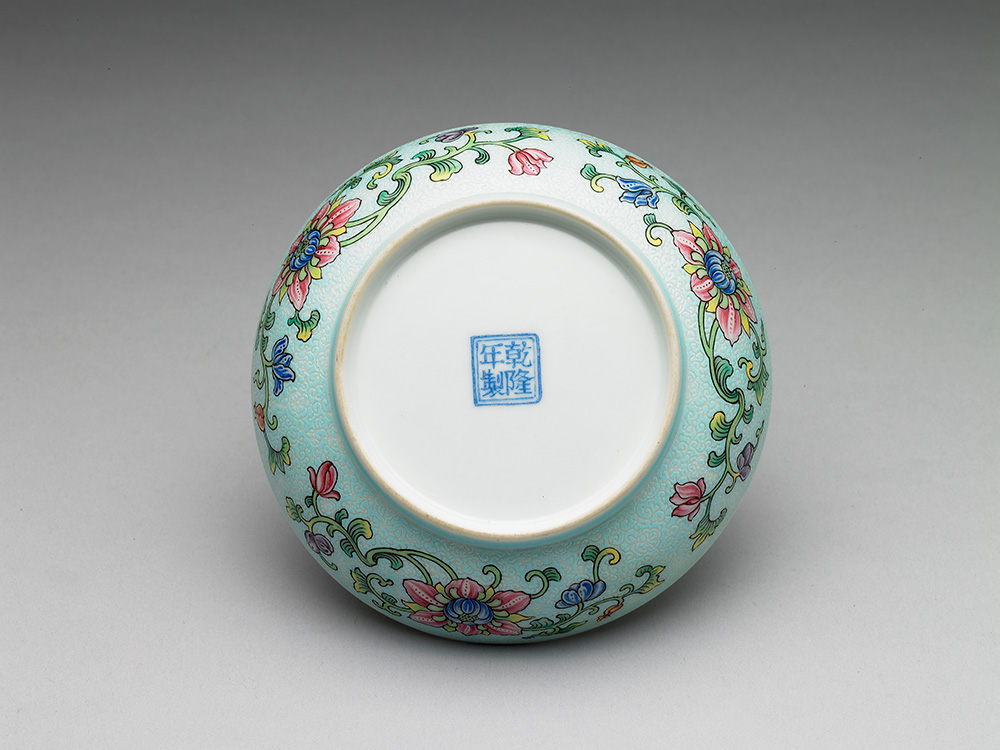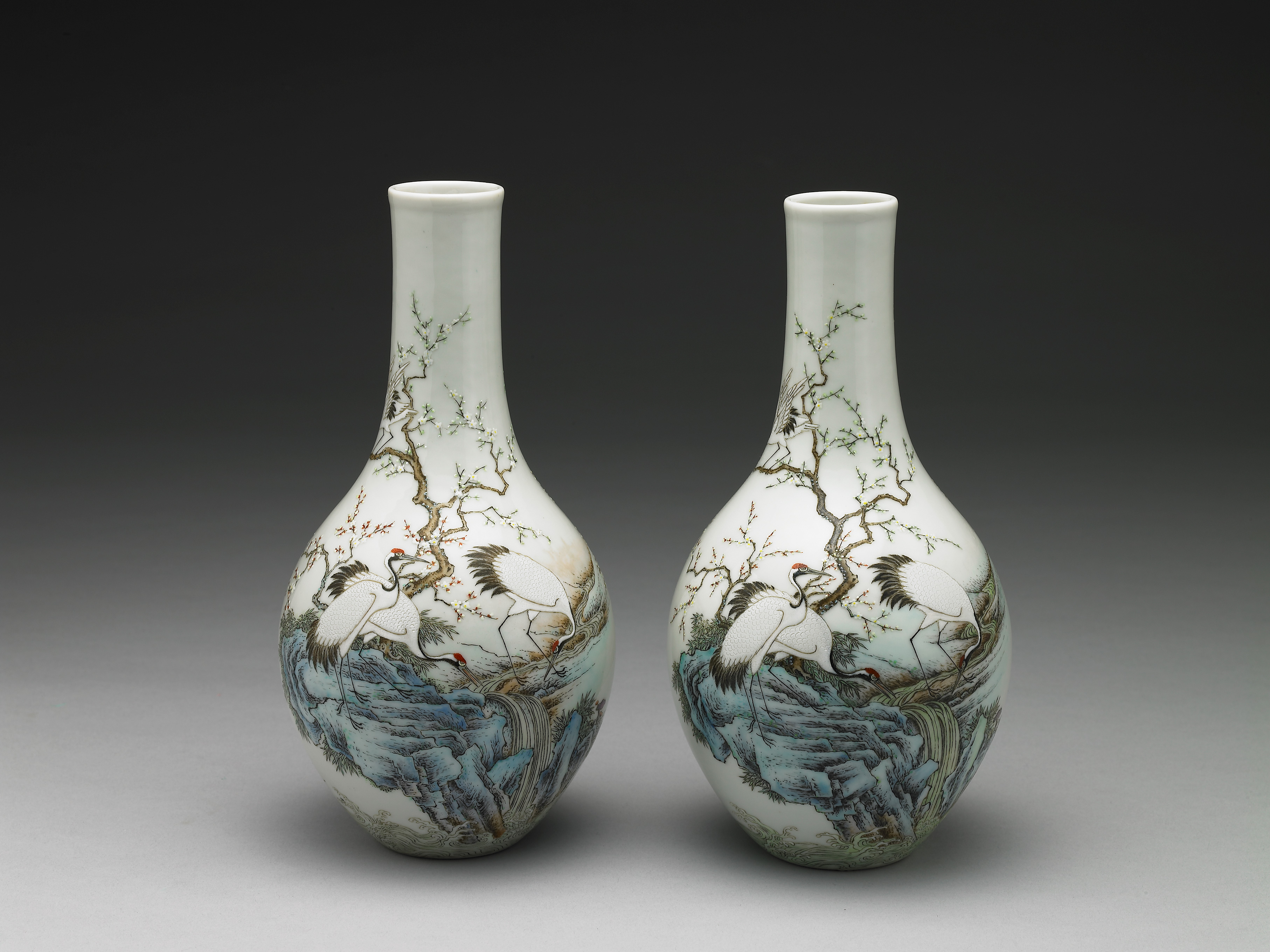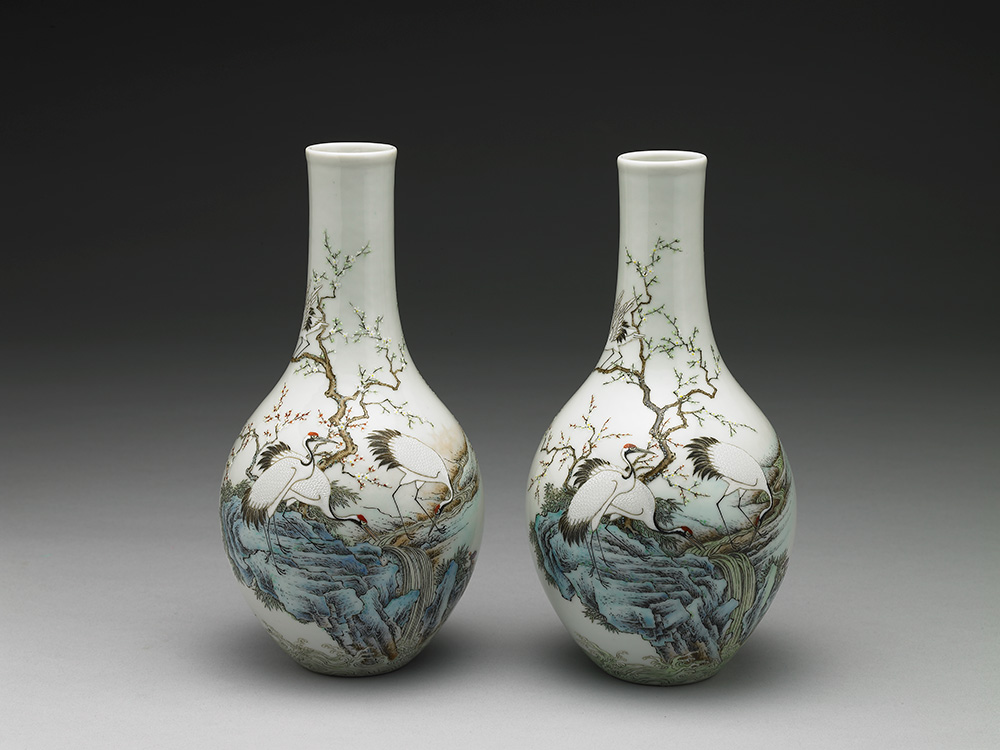Novelty of Brilliance
The decorative patterns of Qianlong's porcelain with falangcai painted enamels can generally be divided into two categories. One is artworks with written poems and patterns of profound connotations, as seen in exhibits of "Convergence of Tints". The other one is with the depiction of paintings, flourishing on divine compositions. This section would like to recommend the innovative patterns which are exclusive to the Qianlong reign. First, the portraits presenting the clear profile and vivid facial expressions on the literati, gents, eighteen Lohans, the "Mother and Child" motif from the East and West, and the Western lady, all grasp the attention of people. Secondly, there comes the pavilion and landscape. There is a series of palatial architecture with eaves touching the clouds. It presents the ideal of a livable and pleasant place to travel. The third is ones with refined and intricate patterns in polychrome colouration, with techniques of painting, chisel-carving, and appliqué decorations, accentuated by various blossoms to compose the imagery of adding brilliance on the perfection.
Embroidery Patterns on Porcelain
Different from the technique of using falangcai pigments to achieve elaborate decorations, this set of red or blue works gradually carved out unwanted areas on the monochrome glaze surface, then eventually to accomplish the white patterns on a red or blue ground. Surprisingly, the Islamic porcelains in the latter half of the 17th century also possessed patterns in similar techniques. The intricacy of carving out the glaze colour was perceived by artisans as embroideries on textiles in the early Republic Period, therefore, they named this type of works as the embroidery on a red ground or the embroidery on a blue ground.
-
Bowl with flower brocade carved on a red ground in falangcai painted enamels
- Qianlong reign (1736-1795), Qing dynasty
-
Tea bowl with Indian lotus carved on a blue ground in falangcai painted enamels
- Qianlong reign (1736-1795), Qing dynasty
Yangcai Yanghua (Distinct Colour and Flower)
It's quite hard to imagine that, the emperor in the 18th century would inspect each piece of porcelain sent in the court from Jingdezhen. In 1737, the emperor was presented with a group of new porcelains in archaic or innovated styles. The exhibited square vase has yellow glaze as the base, covered fully in flowers and intertwining vines and branches, additionally, with flowers distinct from the previous reigns then it would be regarded as "Yangcai Yanghua". The repeated request from the emperor to produce "Yangcai Yanghua", thus entitled this type of decorations to be praised as the classics of artworks in yangcai painted enamels.
-
Square vase with Western flower on a yellow ground in yangcai painted enamels
- Qianlong reign (1736-1795), Qing dynasty
Western Mother and Child
The glamorous Western ladies stand for one of the distinct characteristics of falangcai porcelain in the Qianlong reign, including shepherdess on the lid of a box and the "Mother and Child" motif as seen on the vase with paired handles. The use of chiaroscuro technique that complemented with pastel colours enhanced the features on figures' faces, and brightened up their expressions. In order to investigate the context of the imagery's appearing, there are at least two directions to pursue. Once we lay eyes on the mother-and-child motif as seen here, however, it highlights the innovated style of the Qianlong reign that embraced all themes in variety.
-
Rectangular box with a Western lady and three sheep on a polychrome ground in falangcai painted enamels
- Qianlong reign (1736-1795), Qing dynasty
-
Vase with two handles with Western figure on a polychrome ground in falangcai painted enamels
- Qianlong reign (1736-1795), Qing dynasty
Goldfish and Aquatic Plants
Aspired to have achievements transcending previous reigns might be the longing of the Qianlong Emperor, consequently, he seized every opportunity to give his opinions on the productions of official wares. The first year of the emperor's enthronement, he unexpectedly mentioned that the paintings on the snuff bottle were too sparse, and he requested the craftsmen to paint to the fullest for the next production. As seen from the exhibits, many of the porcelain bowls have interior base adorned with paintings, one of which is the goldfish with two or three tails, swimming freely among the aquatic plants.
-
Dish with goldfish and aquatic plants inside a yellow exterior in falangcai painted enamels
- Qianlong reign (1736-1795), Qing dynasty
"Kezi (Mother Tutoring Child)" Motif
The "Kezi" motif takes on the theme of mother and child, and it is one of the signature decorations of Qianlong's porcelain in falangcai painted enamels. From the child reading a book, the mother writing with a brush, to the moment that they appear in the garden and about to play, the exquisite composition and detailed depiction of window frames and ancient artefacts have all celebrated the daily life in the court to the finest state.
-
Dish with "Mother Tutoring Her Child" motif in falangcai painted enamels
- Qianlong reign (1736-1795), Qing dynasty
-
Dish with "Mother Tutoring Her Child" motif in falangcai painted enamels
- Qianlong reign (1736-1795), Qing dynasty
Adding Brilliance on the Perfection
The main features sit on the surface in a lighter colour, as if a piece of tapestry embellished with assorted embroideries that gives a glamorous effect, which is named as "Jingshang Tianhua (adding brilliance on the perfection)". The archival record shows, proximately around the year of (1740-1741), the "Jingshang Tianhua" motif had become a common pattern. In general, the yangcai porcelains mostly possess the chisel-carved pattern of Huguenot fern, while the falangcai works have variations of carve-outs, brush-drawings, and appliqué-paintings. All of the above deliver the optimal refinement to achieve its full glory, which is possibly the signature style of that era.
-
Dish with "Three Plenty" motif on a polychrome red ground in yangcai painted enamels
- Qianlong reign (1736-1795), Qing dynasty
-
Tea bowl with flower and aquatic plants on a carved red ground in falangcai painted enamels
- Qianlong reign (1736-1795), Qing dynasty
Imperial Design vs Craftsman's Skill
In the 6th year of the Yongzheng reign (1728), it was when the Imperial workshop acquired the technique of extracting enamel pigments, and also shared the result with the craftsmen of Imperial kilns at Jingdezhen. Hence, the decorative patterns of the Imperial workshop and the Imperial kilns gradually achieved the consistent style. As a result, the identification of falangcai and yangcai pieces representing the Qianlong reign has easy and difficult circumstances.In the simple term, pieces having the decorations designed, painted and fired all in the Imperial workshop are the falangcai porcelains. Therefore, since the two sets of bowls with flowers on a polychrome ground that have the entire process echoes to the imperial production, thus they are considered as the falangcai pieces. In contrary, in the 7th year of the Qianlong reign (1742) that the Emperor placed his Royal request to have the production of "begonia shaped cup and dish with four-bounds landscapes (panels with four scenes)" and the "paired handles cup with two-bounds landscapes (panels with two scenes)". In addition, the demand-received Tang Ying (1682-1756) had also emphasized in his memorial to the throne that he will achieve the result with the time frame. From the dialogue between the Emperor and the pottery supervisor, we can regard the four sets of cup and dish as the "yangcai" pieces done at official kilns at Jingdezhen.
Candy-like Colours
In the Kangxi period (1662-1722) most of the enamel pigments were imported from the West. It was not until the 6th year of Yongzheng reign (1728) that the Imperial workshop comprehended the technique of extracting enamel pigments. Since then, acquiring pigment was not a problem. The craftsmen shared the new local-made pigments with the craftsmen of the Jingdezhen Imperial kilns. Besides, the pottery supervisor's document shows that in the Qianlong reign (1736-1795) the new colours make modulating colors different. Whether it is clear water, glue and oily medium, they all can be the material to blend colours. They can also generate candy-like colours such as bright yellow, tender green, purplish red, pastel pink and pinkish green, all of them are new trendy colours in the Qianlong period.
Style of Two Painted Enamels
Depending on where the decorative ornaments were depicted, Qianlong painted enameled works can be divided into products of the Imperial workshops and products of the Jingdezhen Imperial kilns. However, both of them are all belonged to the official wares. Even though the artisans were different, it is possible that one work shows the combination of ornaments from two styles. The Lohan vase, saucer with flowers and birds and saucer with antiques and flowers are the examples.
High-quality Yangcai Porcelain
According to Tang Ying (1682-1756), the pottery supervisor, the Imperial kilns aimed to produce the yangcai porcelain with the same result as that of the falangcai porcelain. Therefore, when the potters drew the illustration, they paid attention to the details and wished that decorative patterns achieved the same result as painting. In the 7th year of Qianlong reign (1742) their hard work finally paid off. When the Emperor made the imperial decree to collect and store the yangcai porcelain, he graded part of the products "excellent", including two gall-bladder-shaped vases with "Crane Bringing Fortune and Joy" motif. It shows that both yangcai porcelain and falangcai porcelain were in the same grade under the system of official ware.
